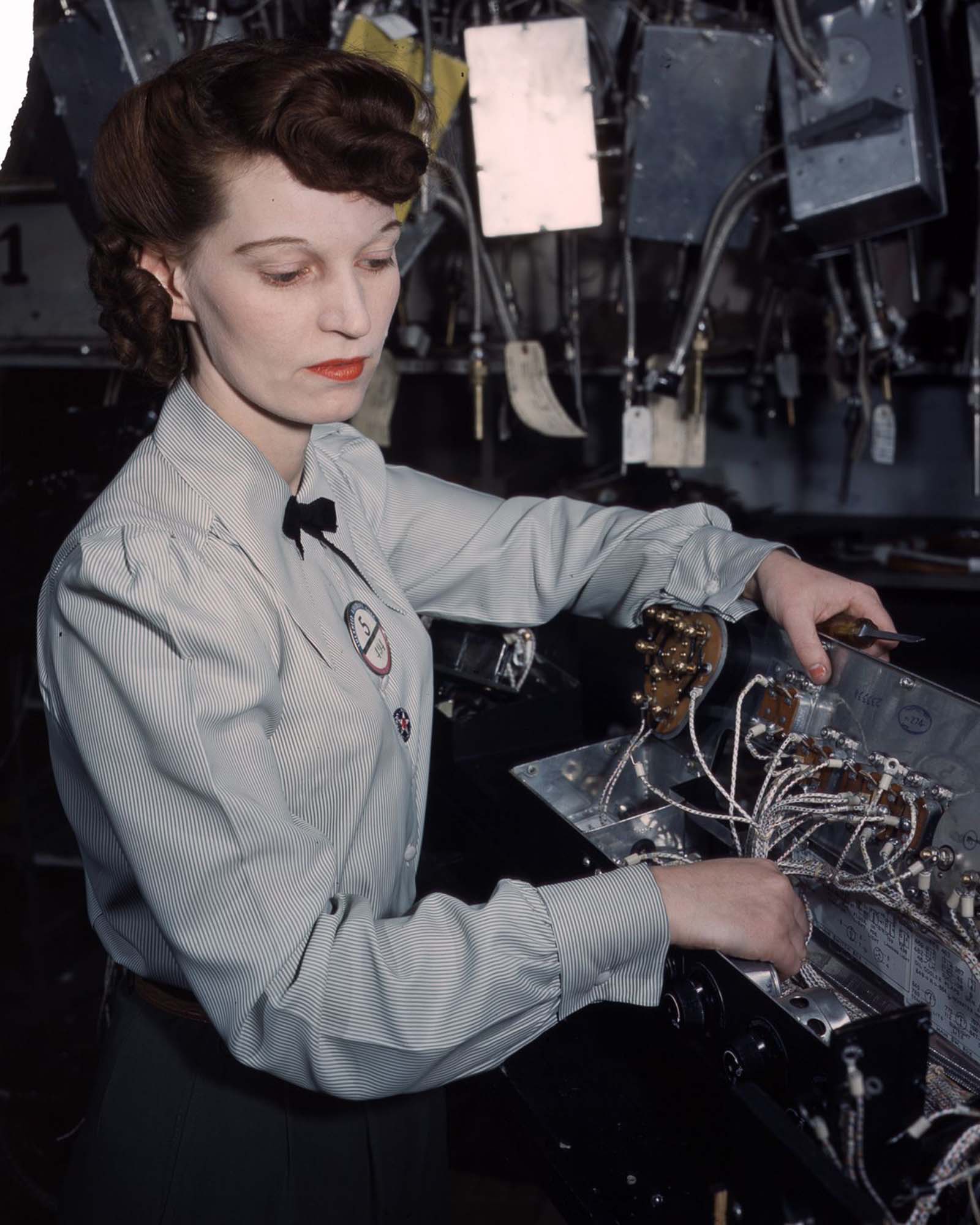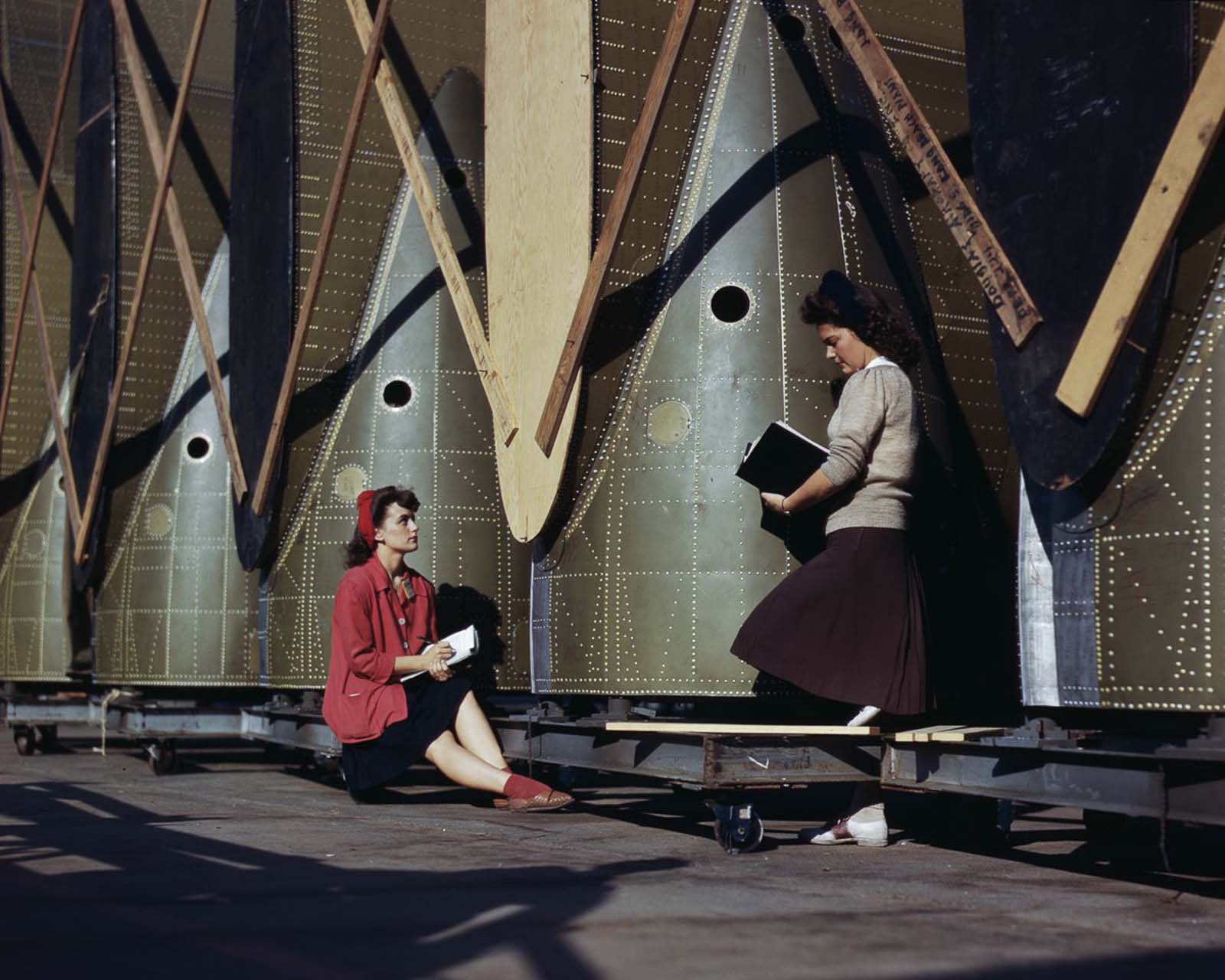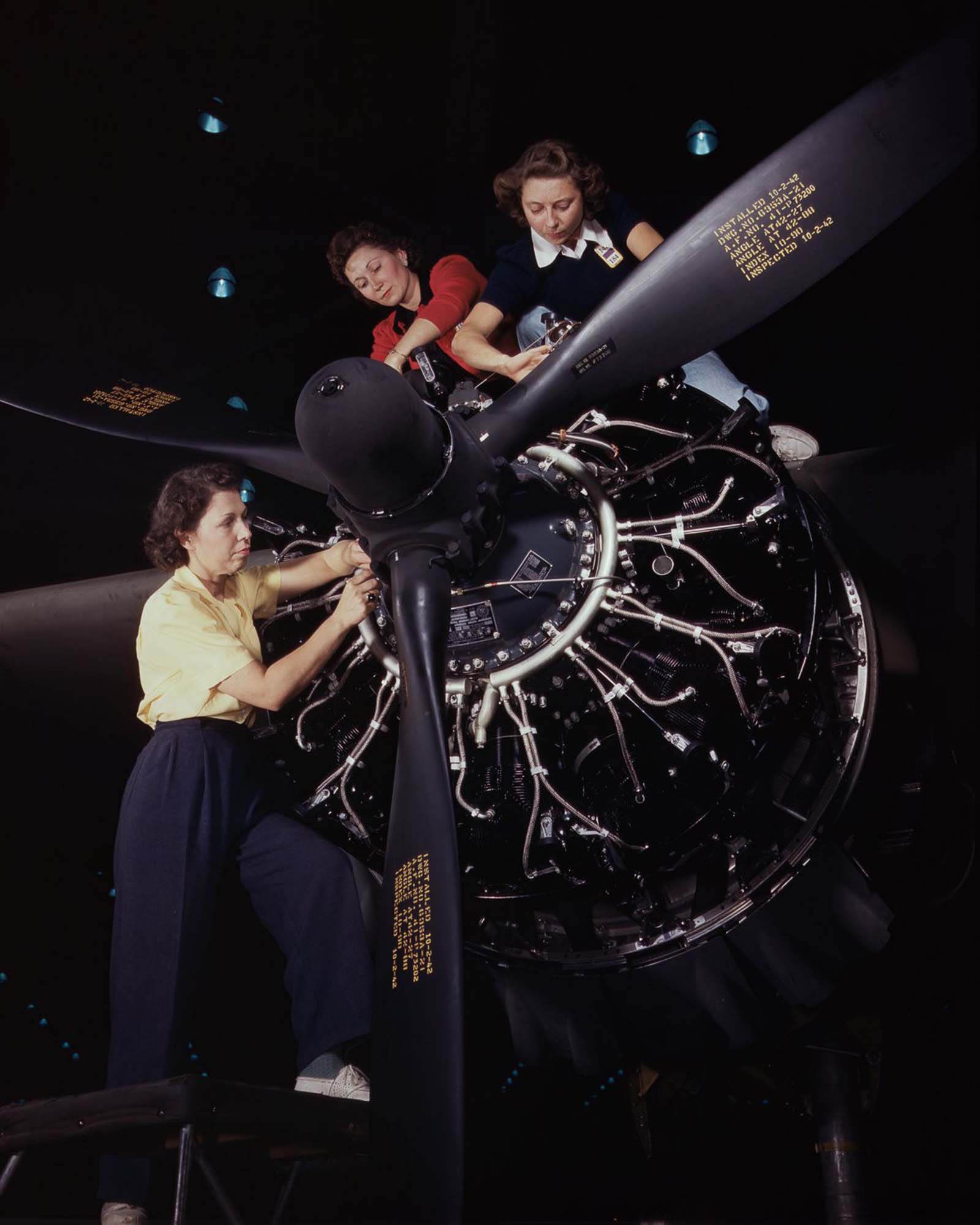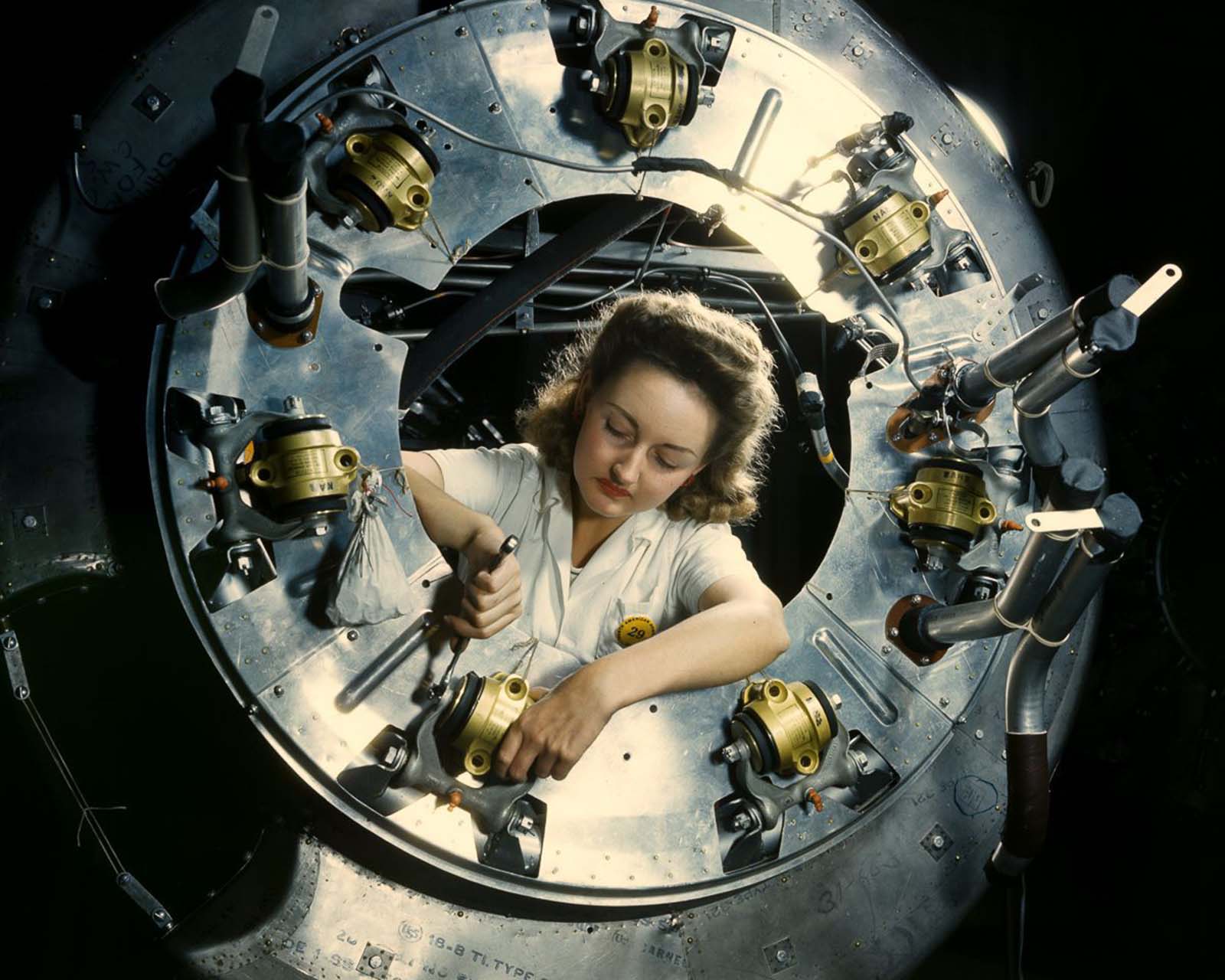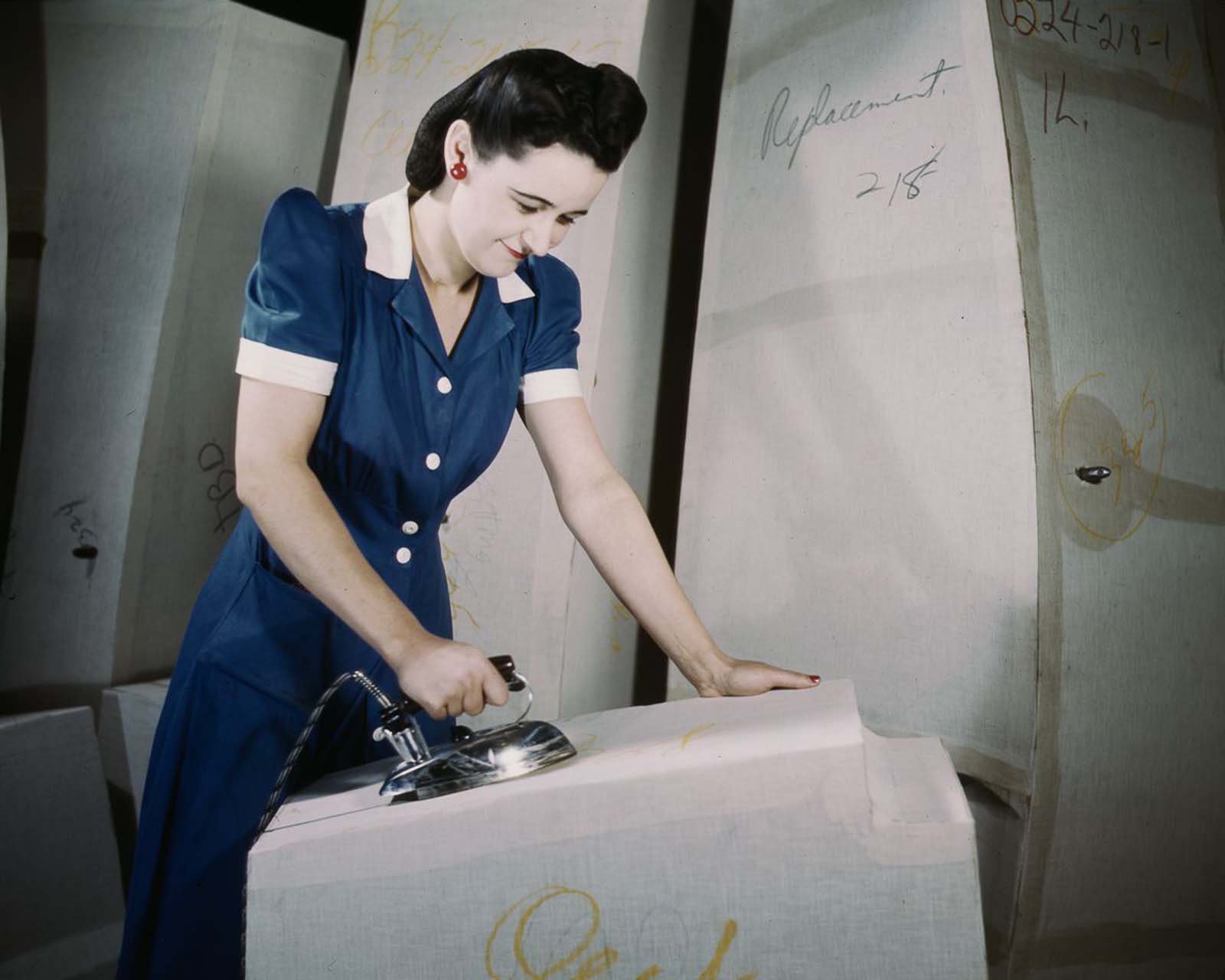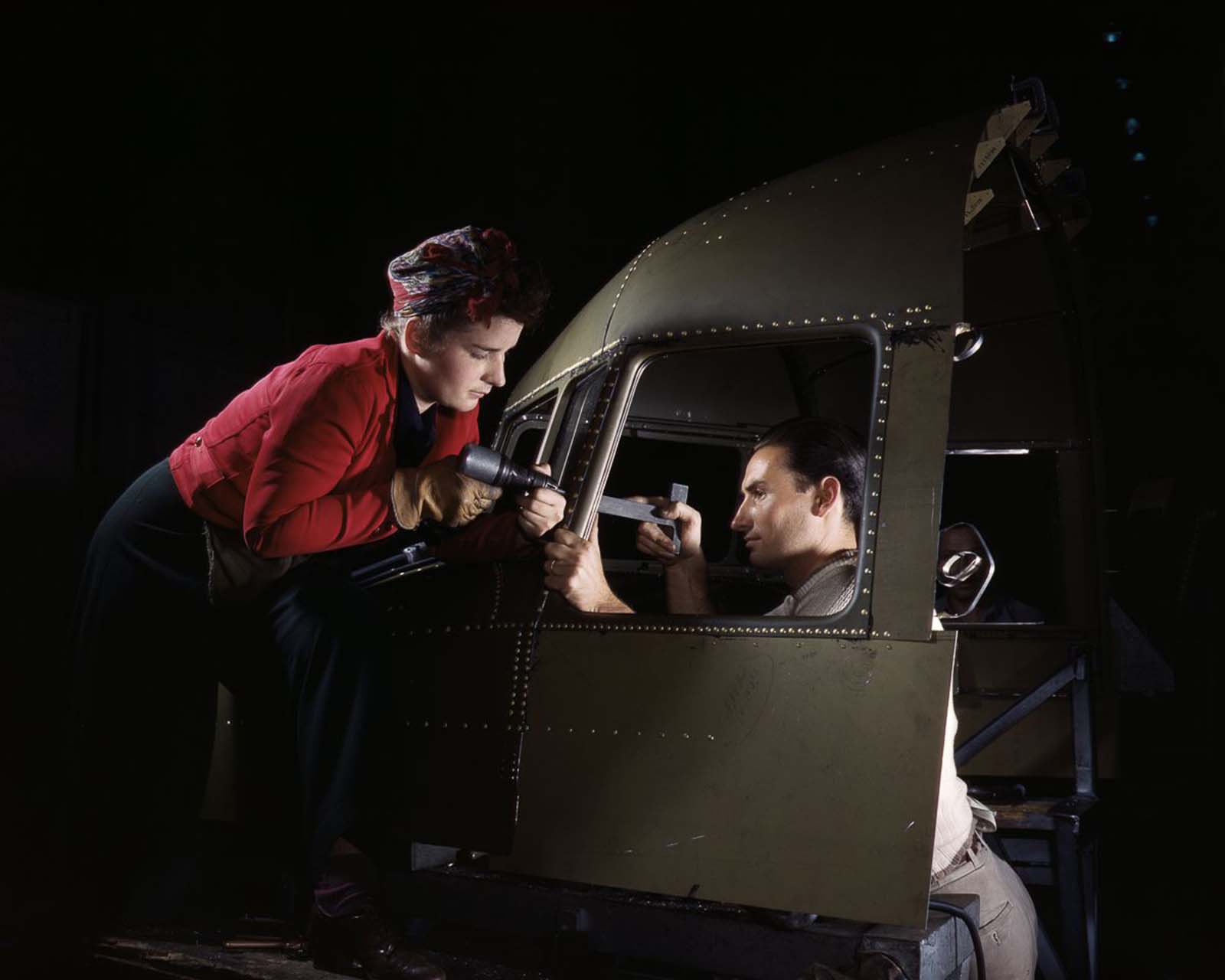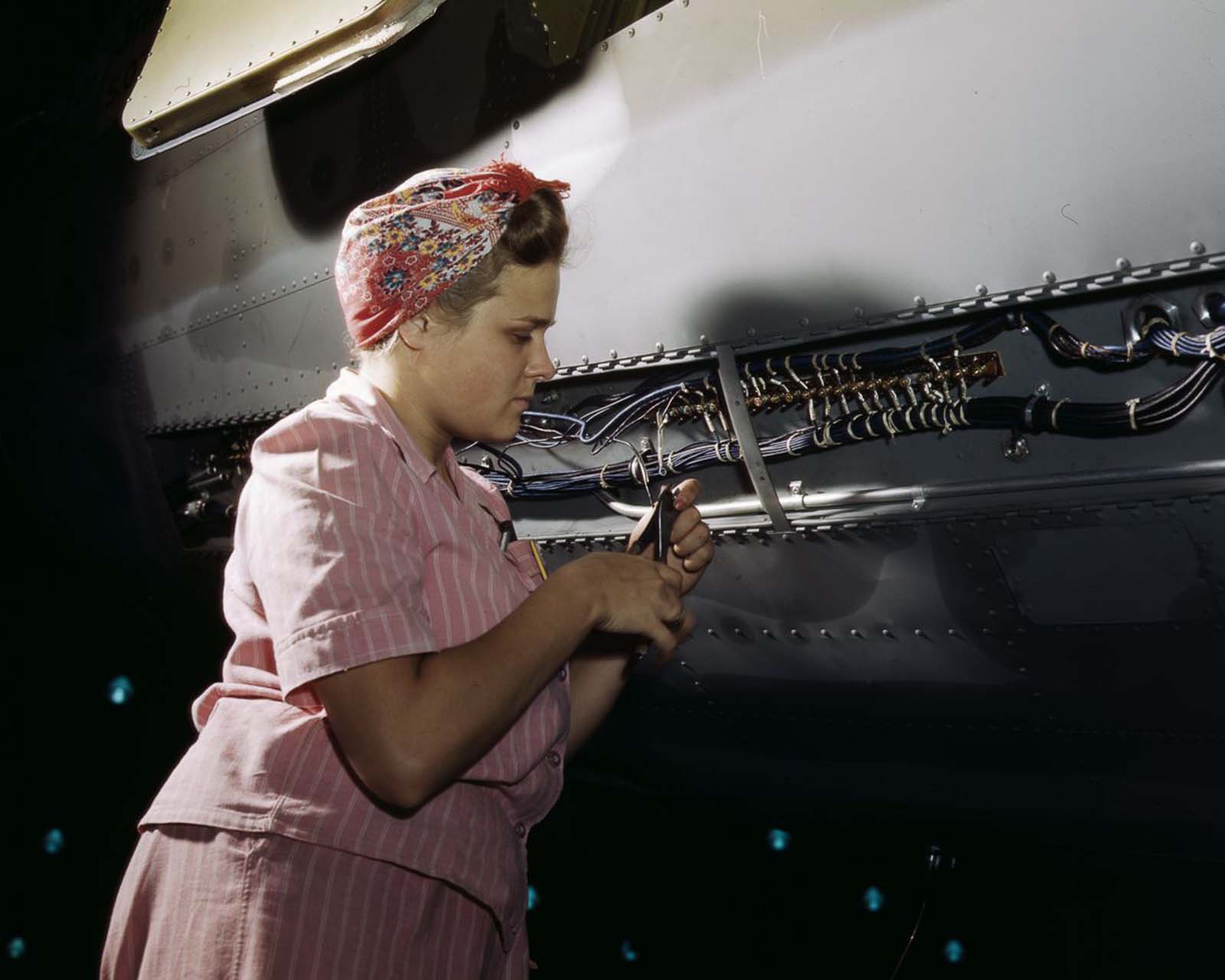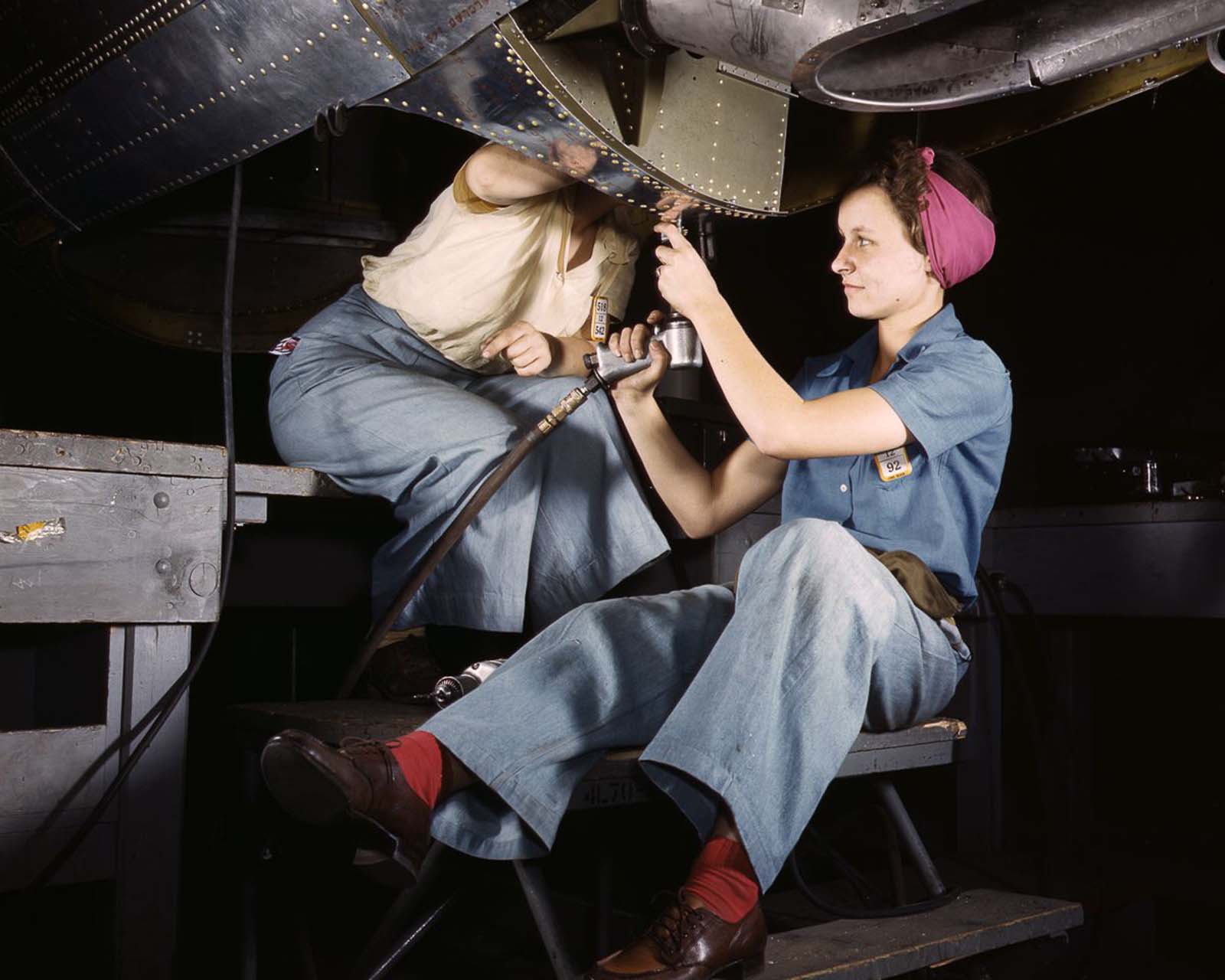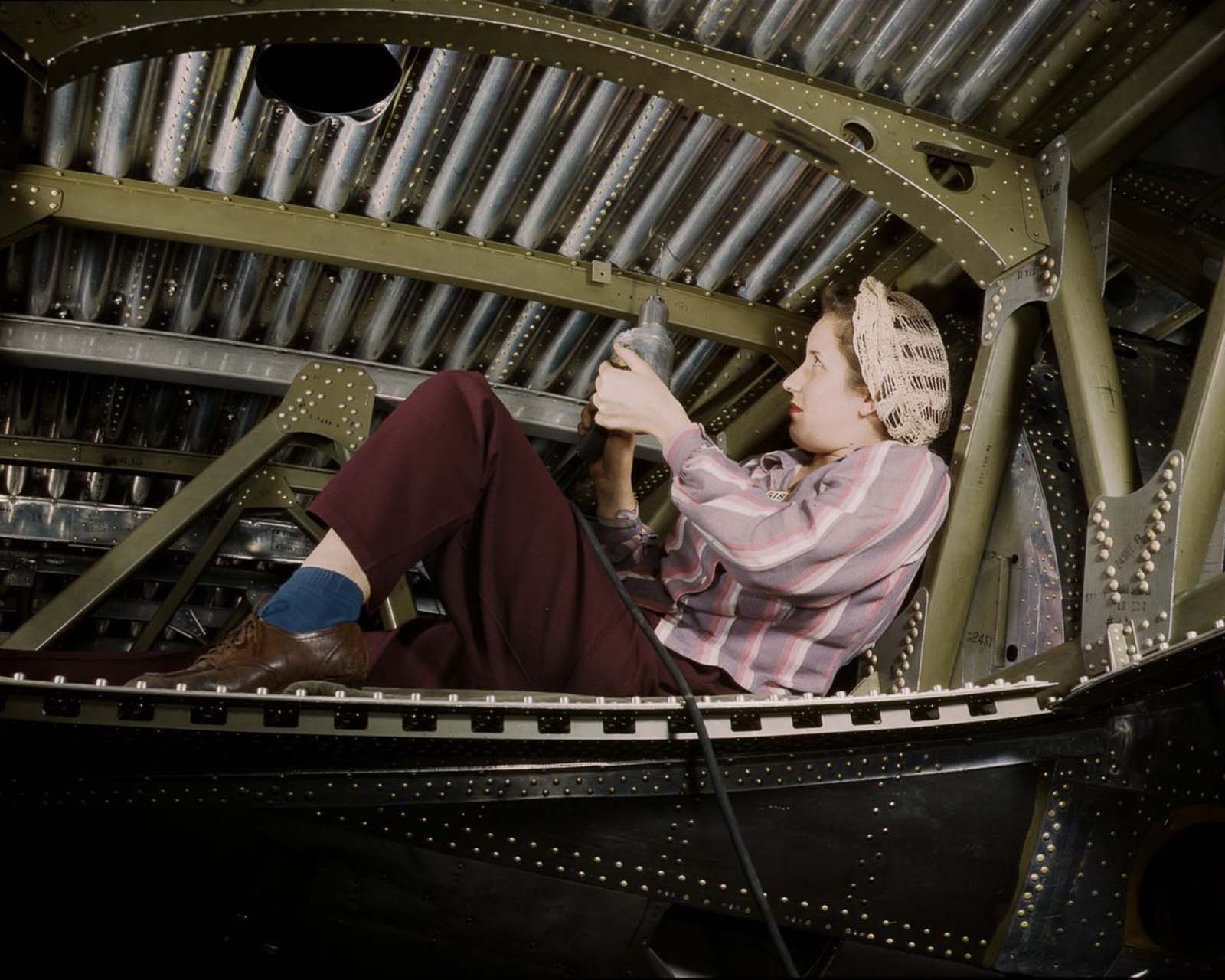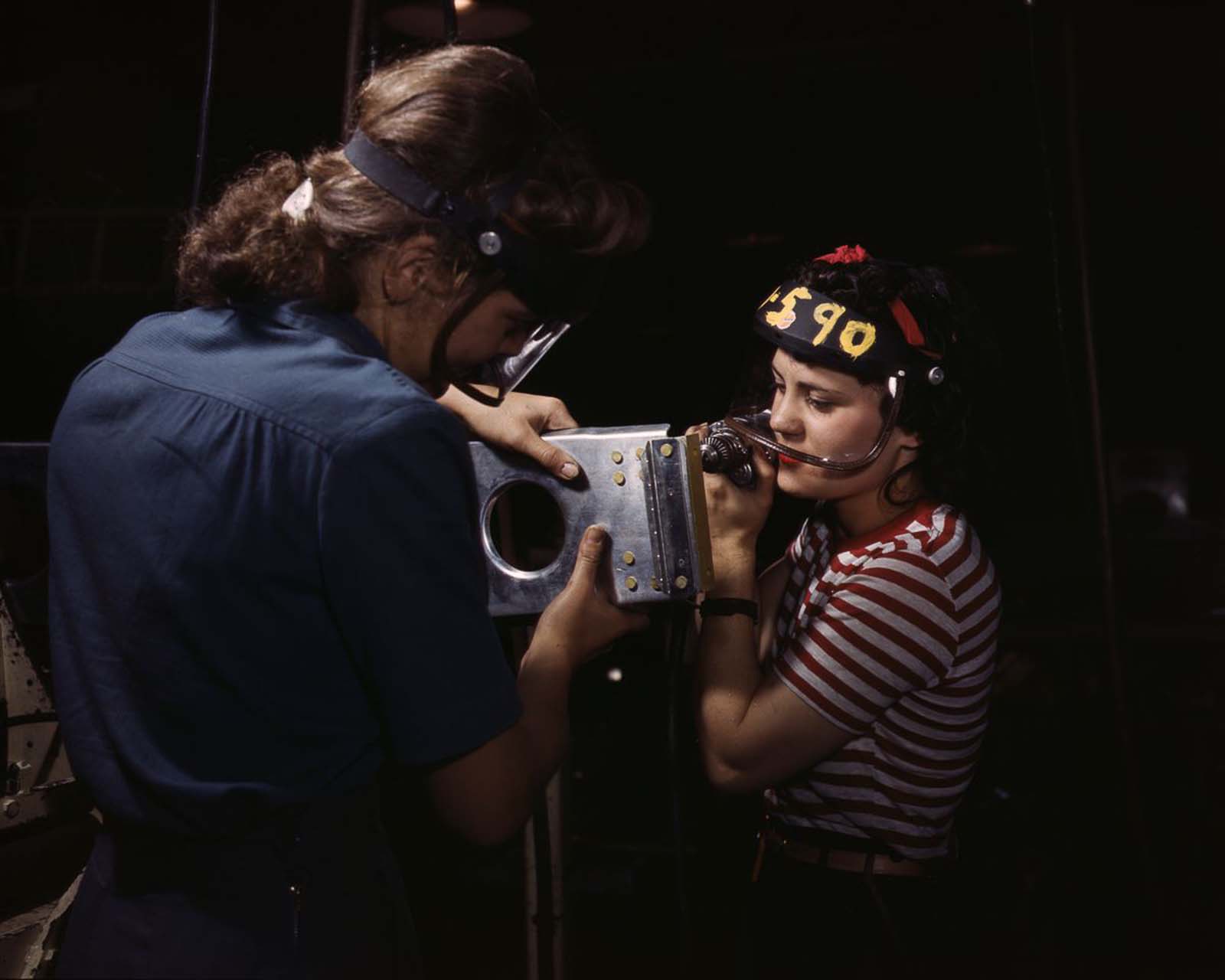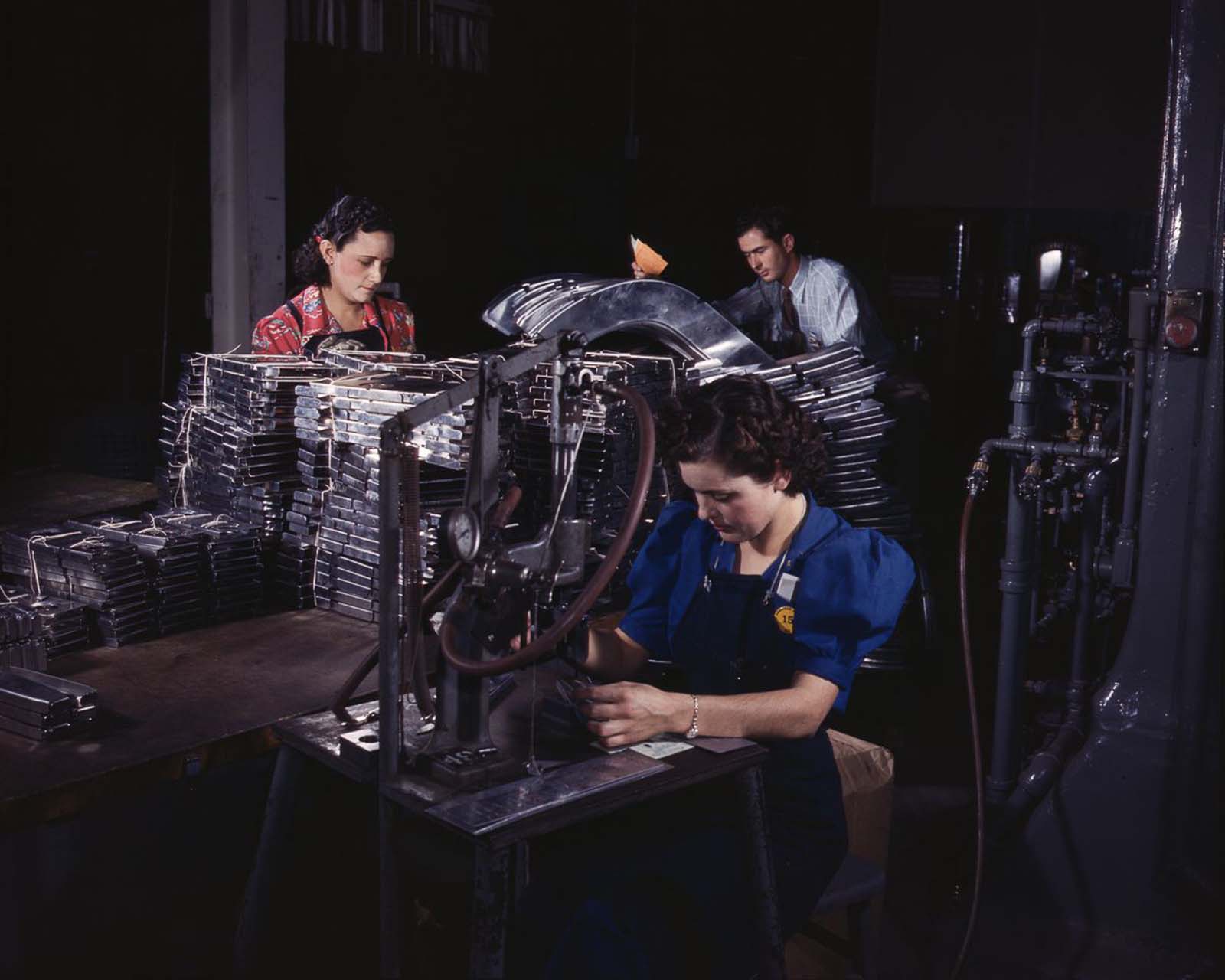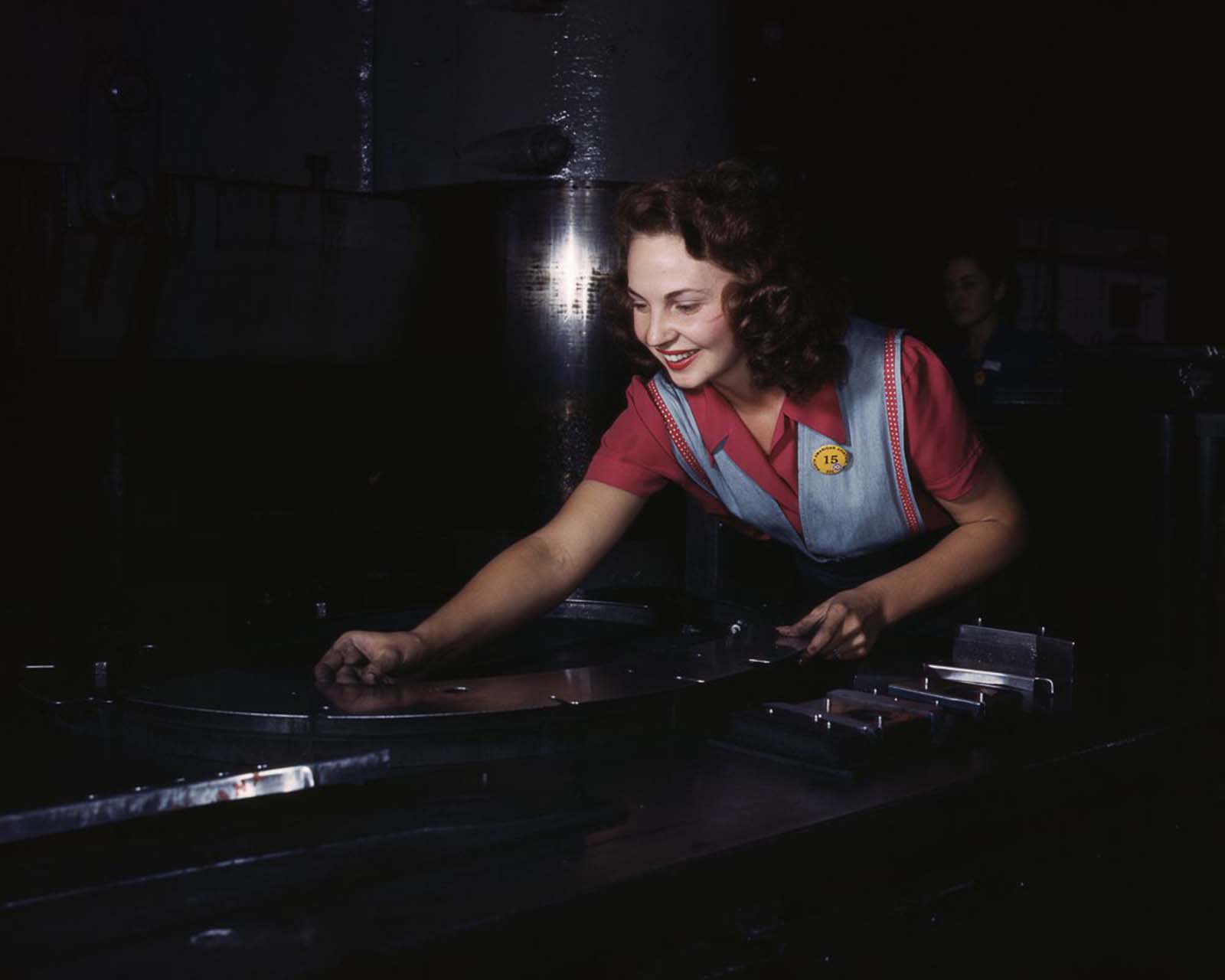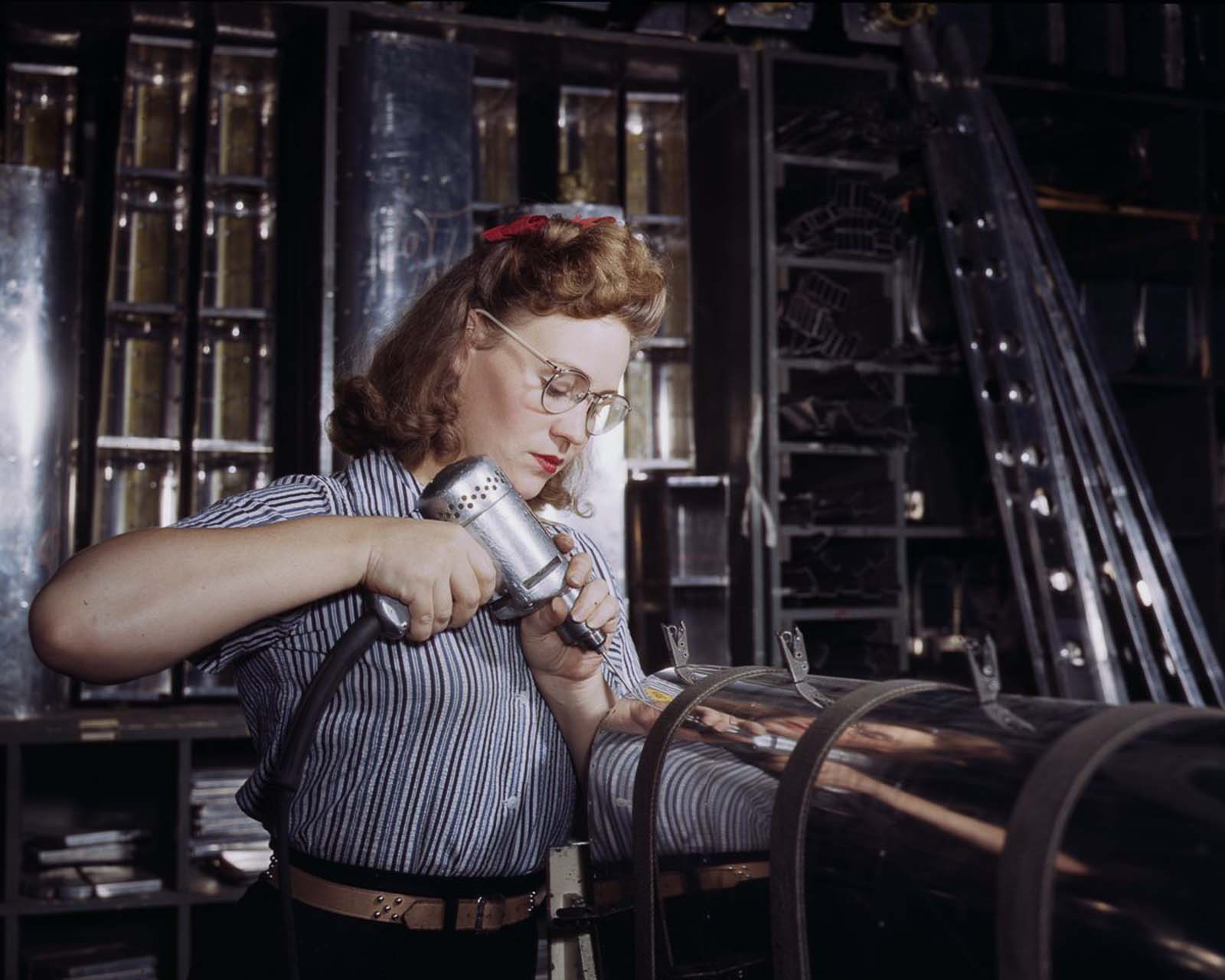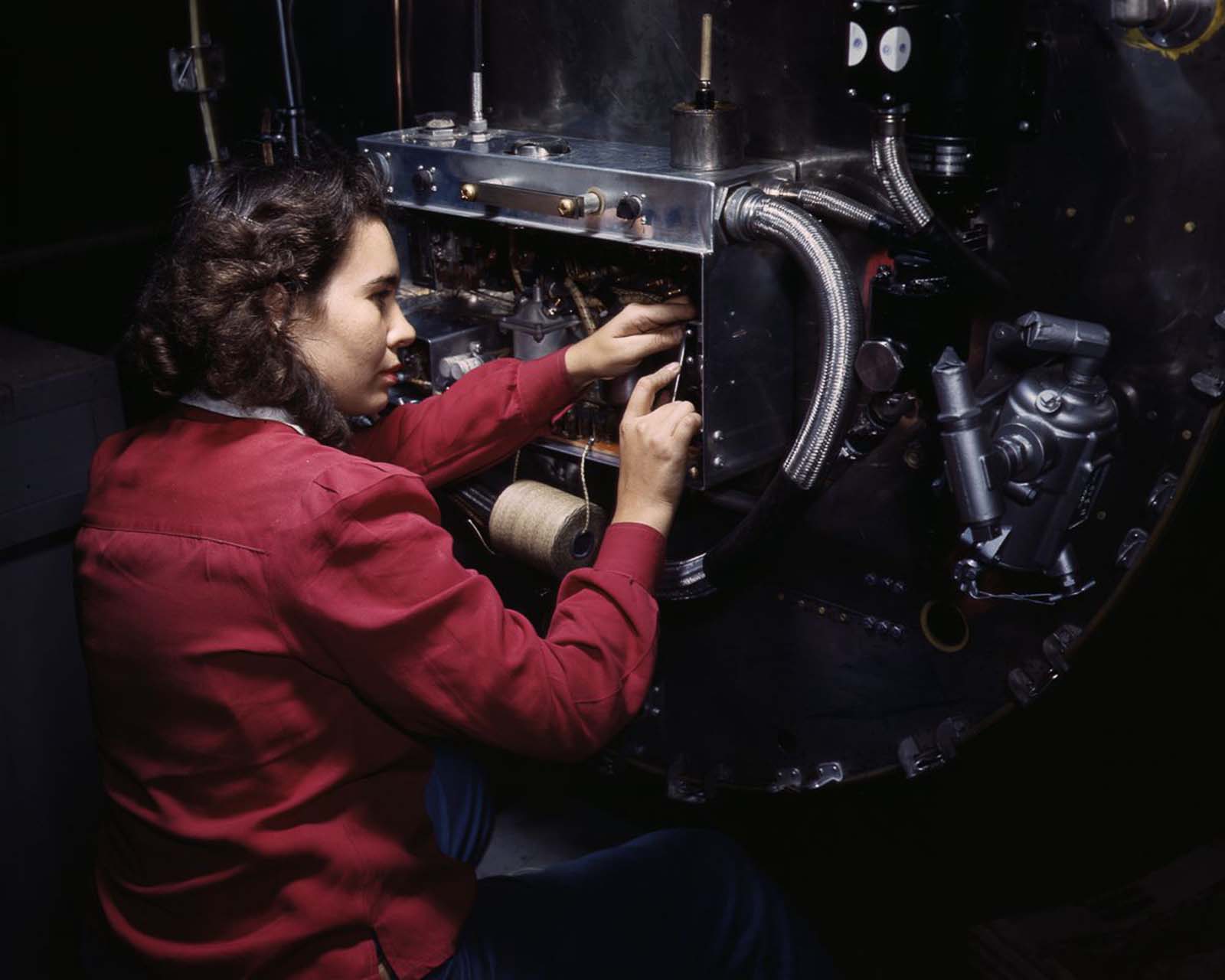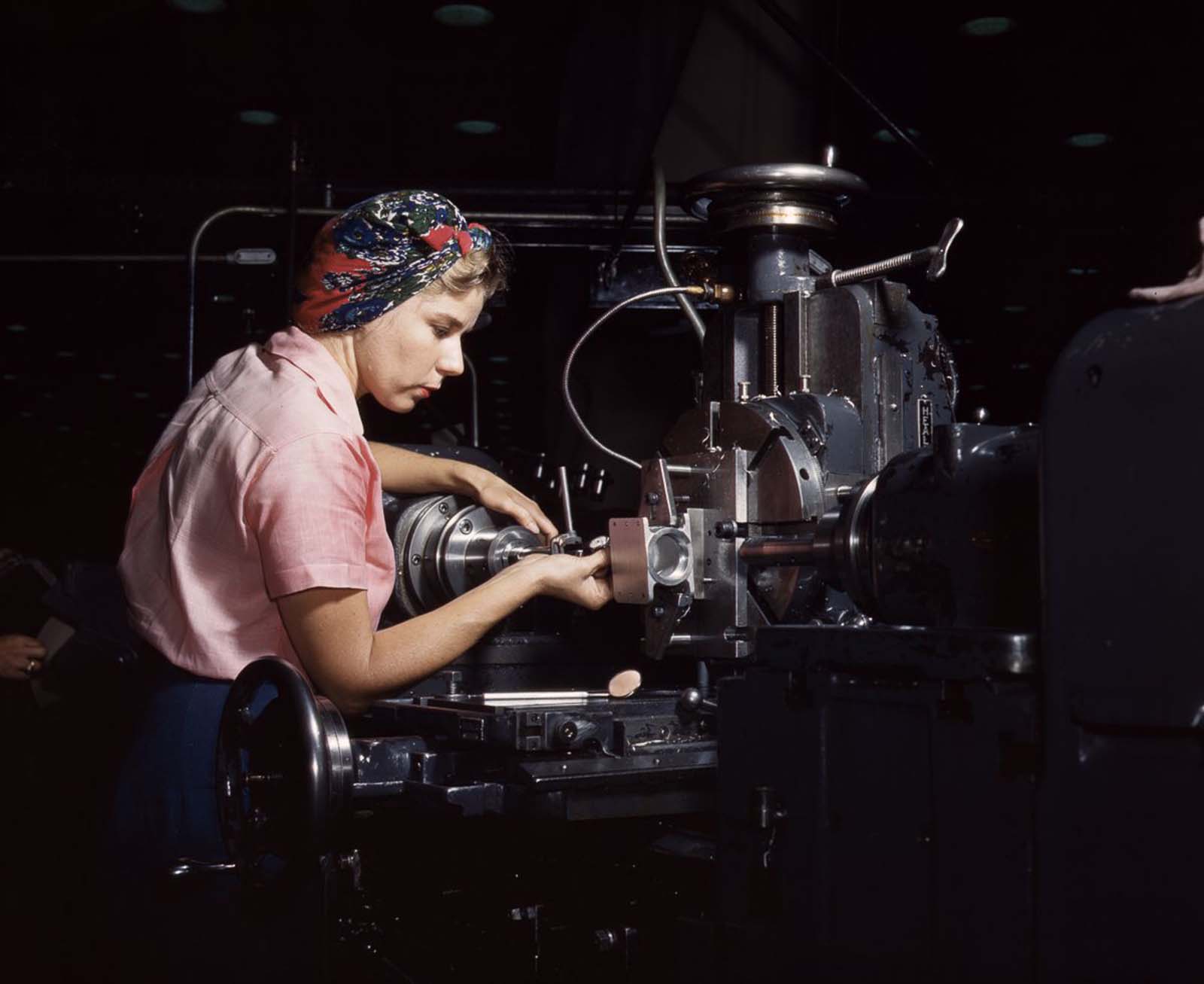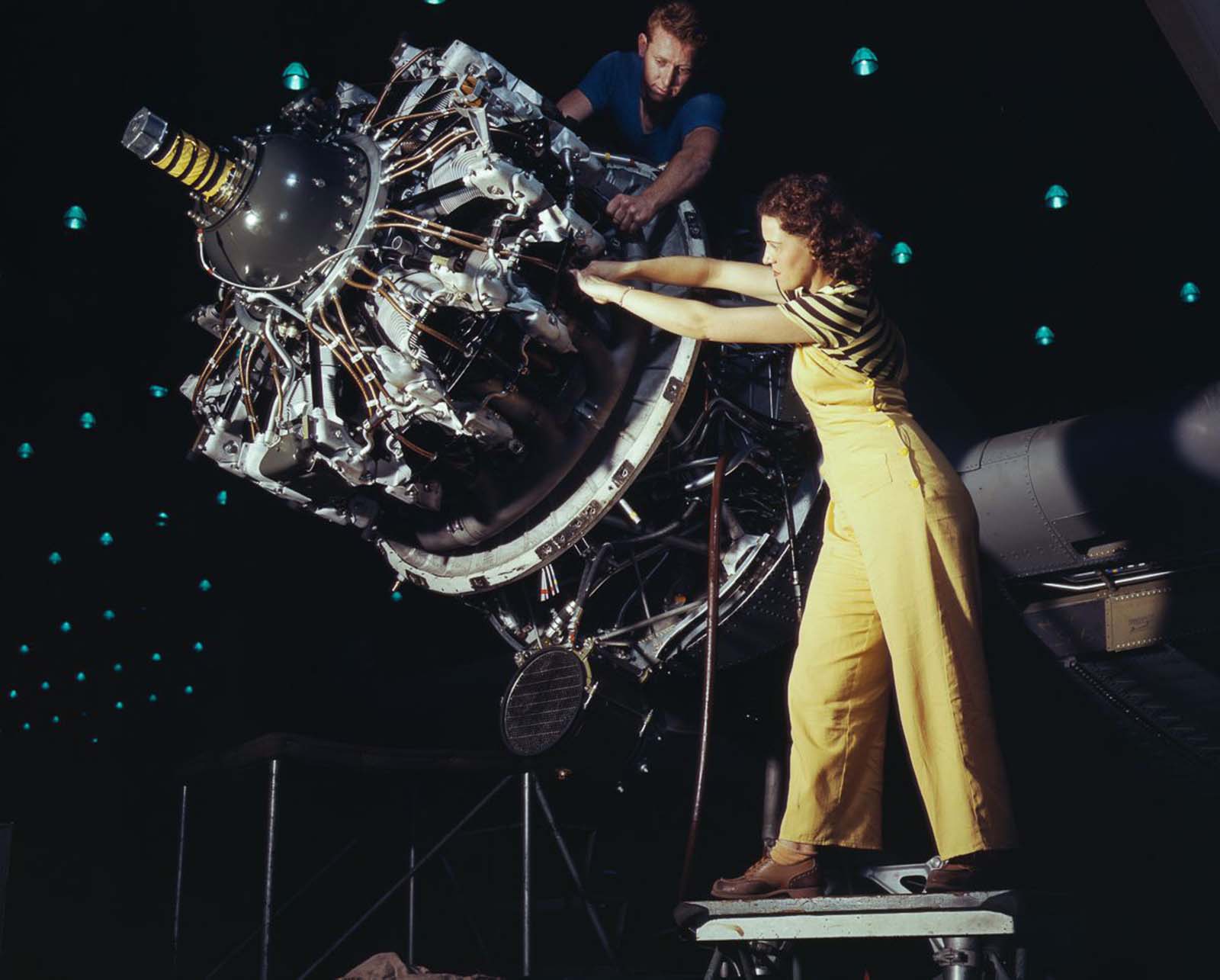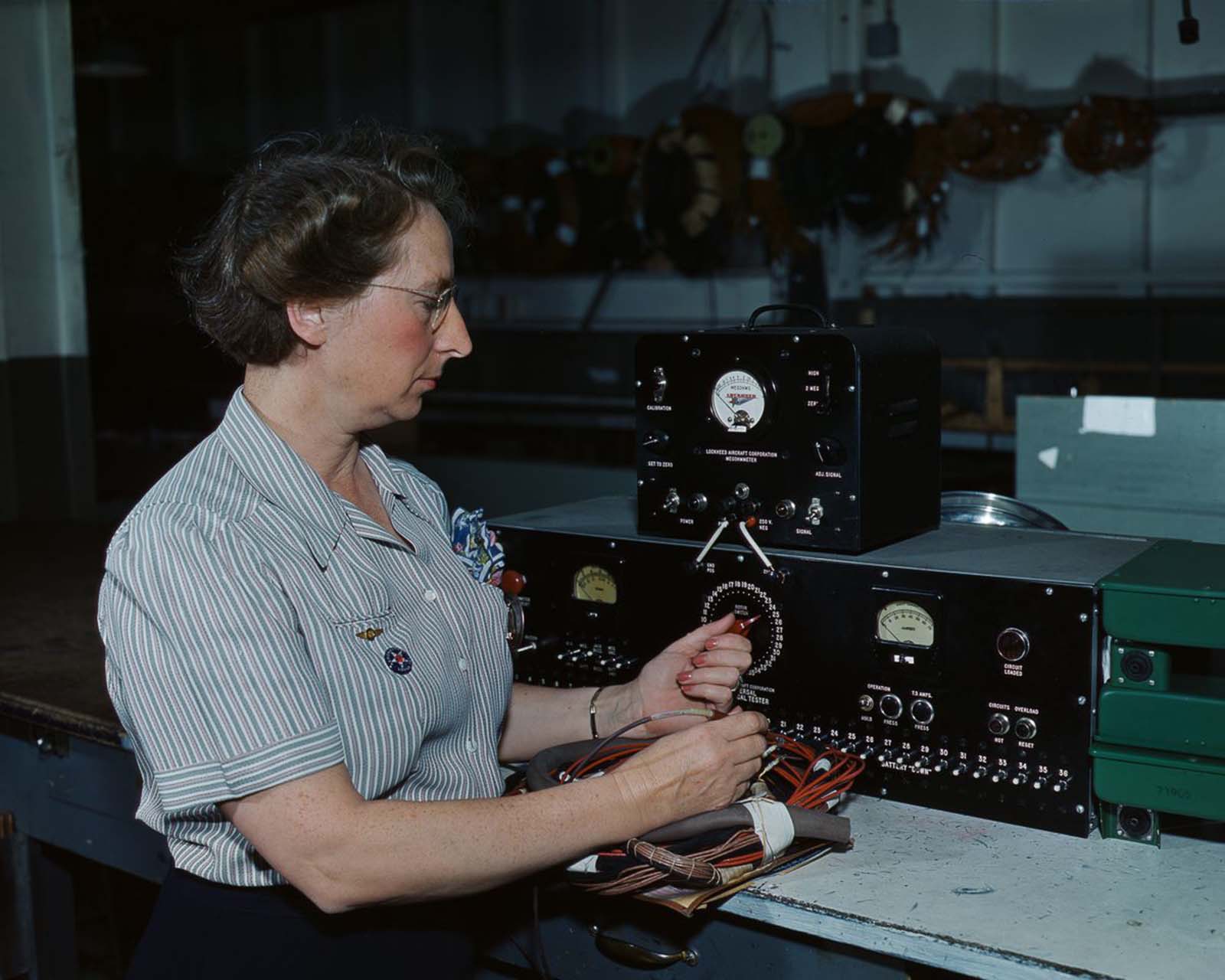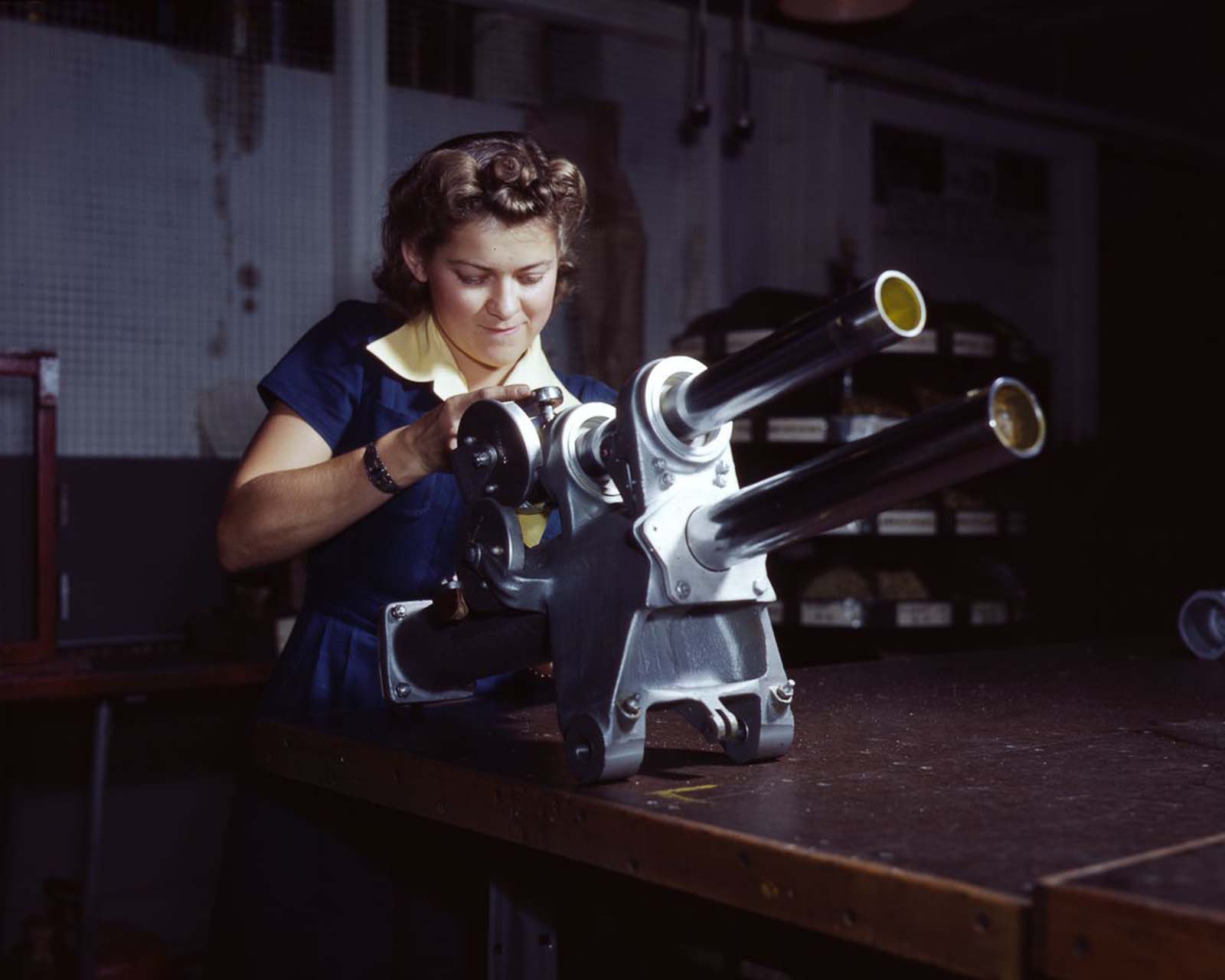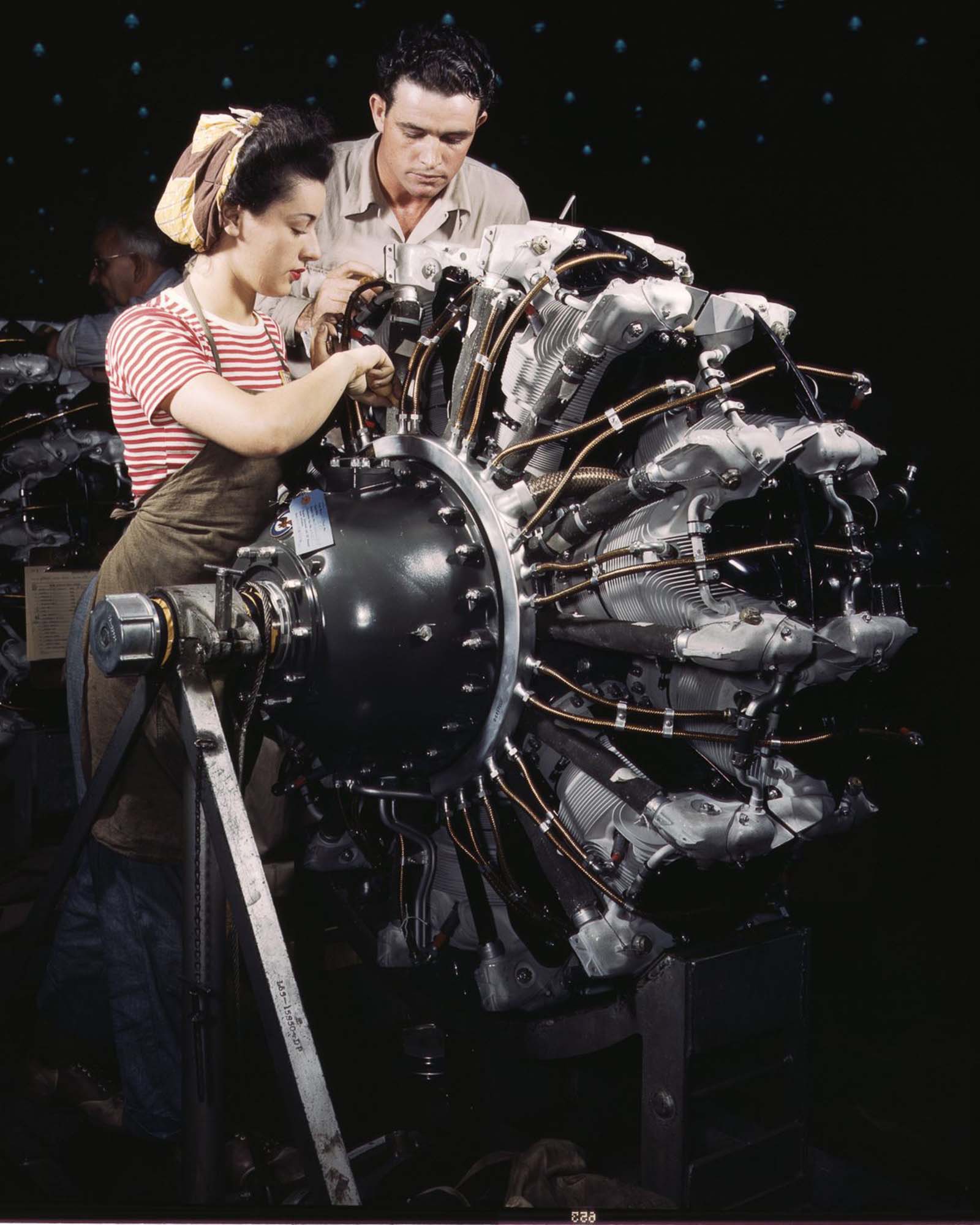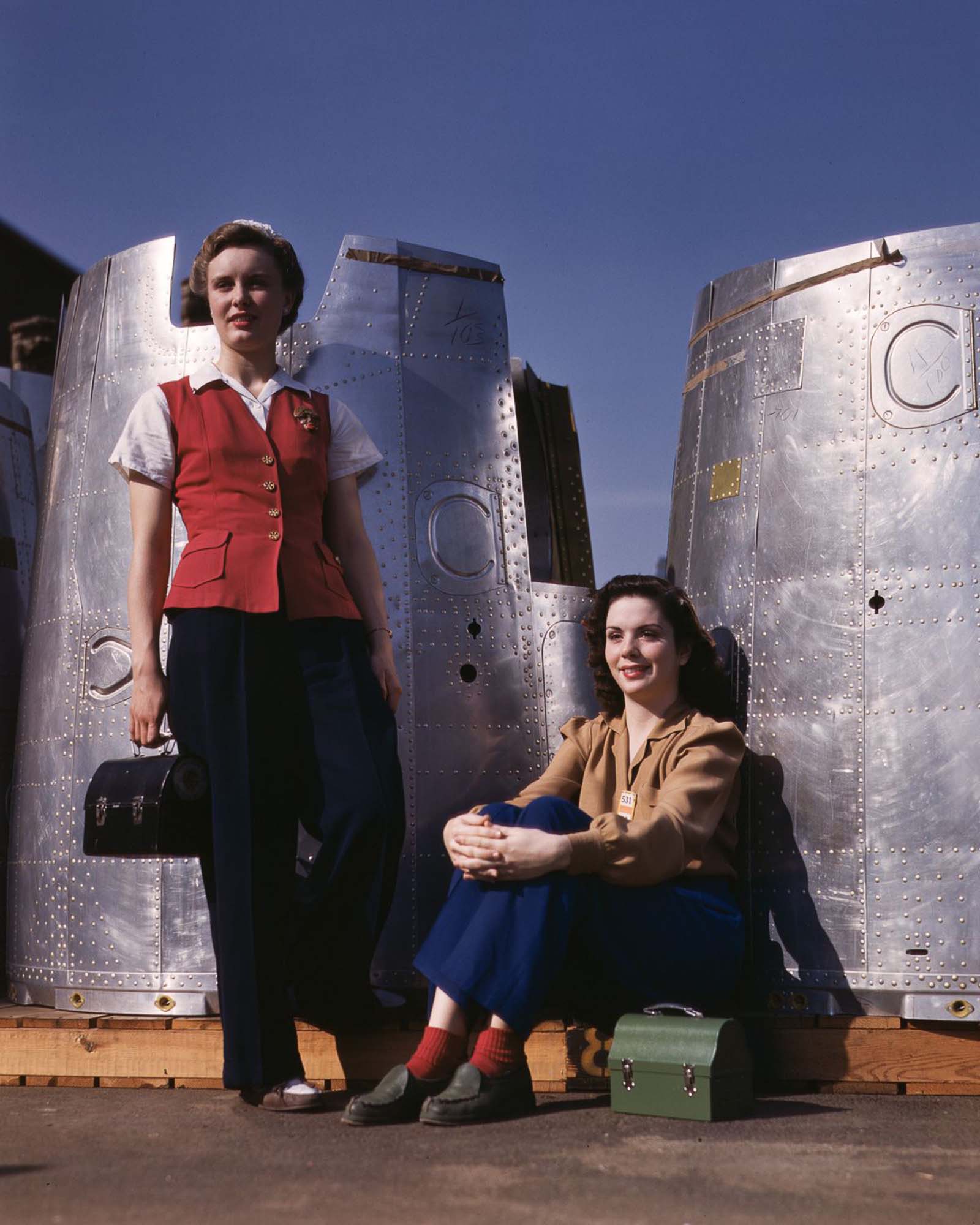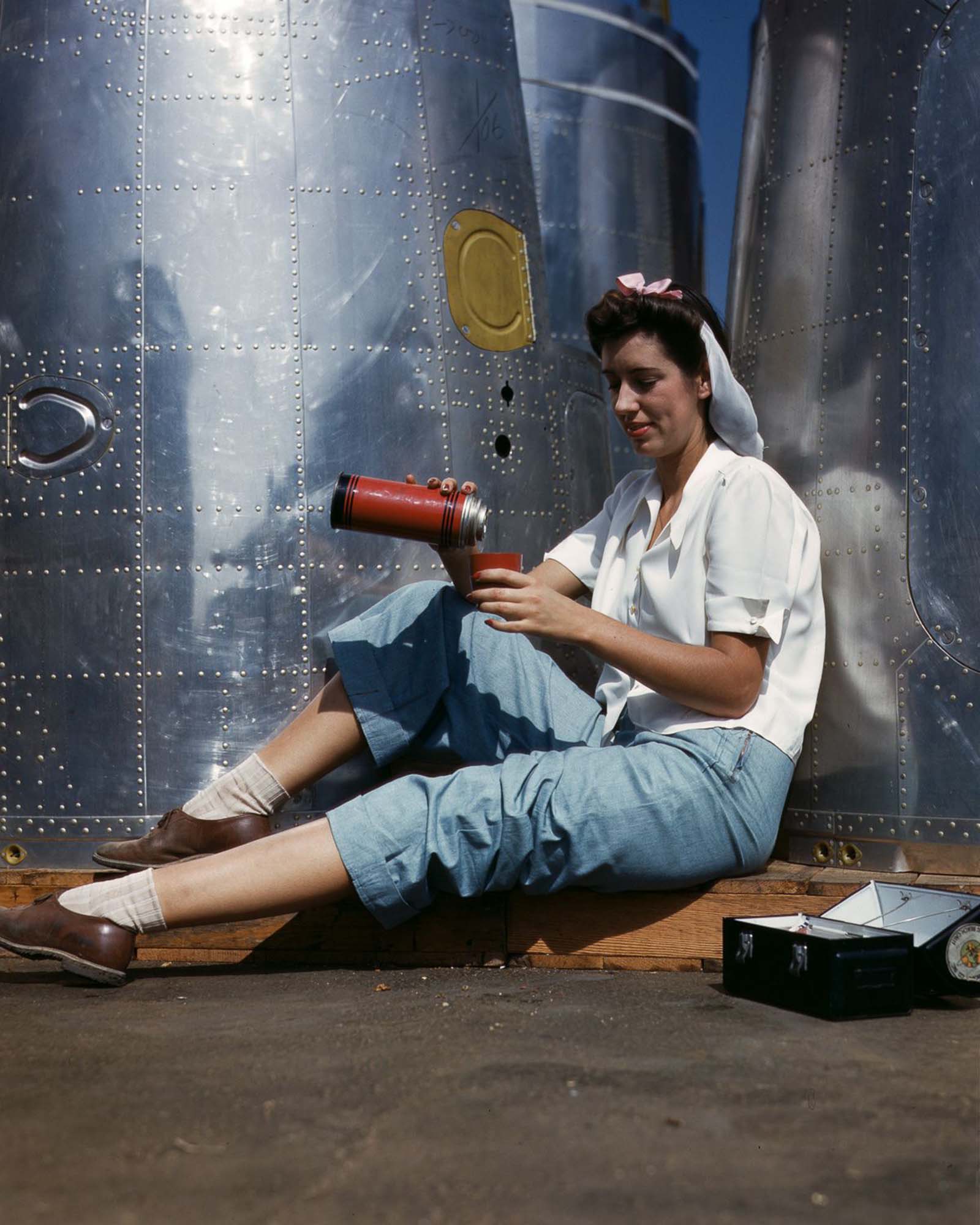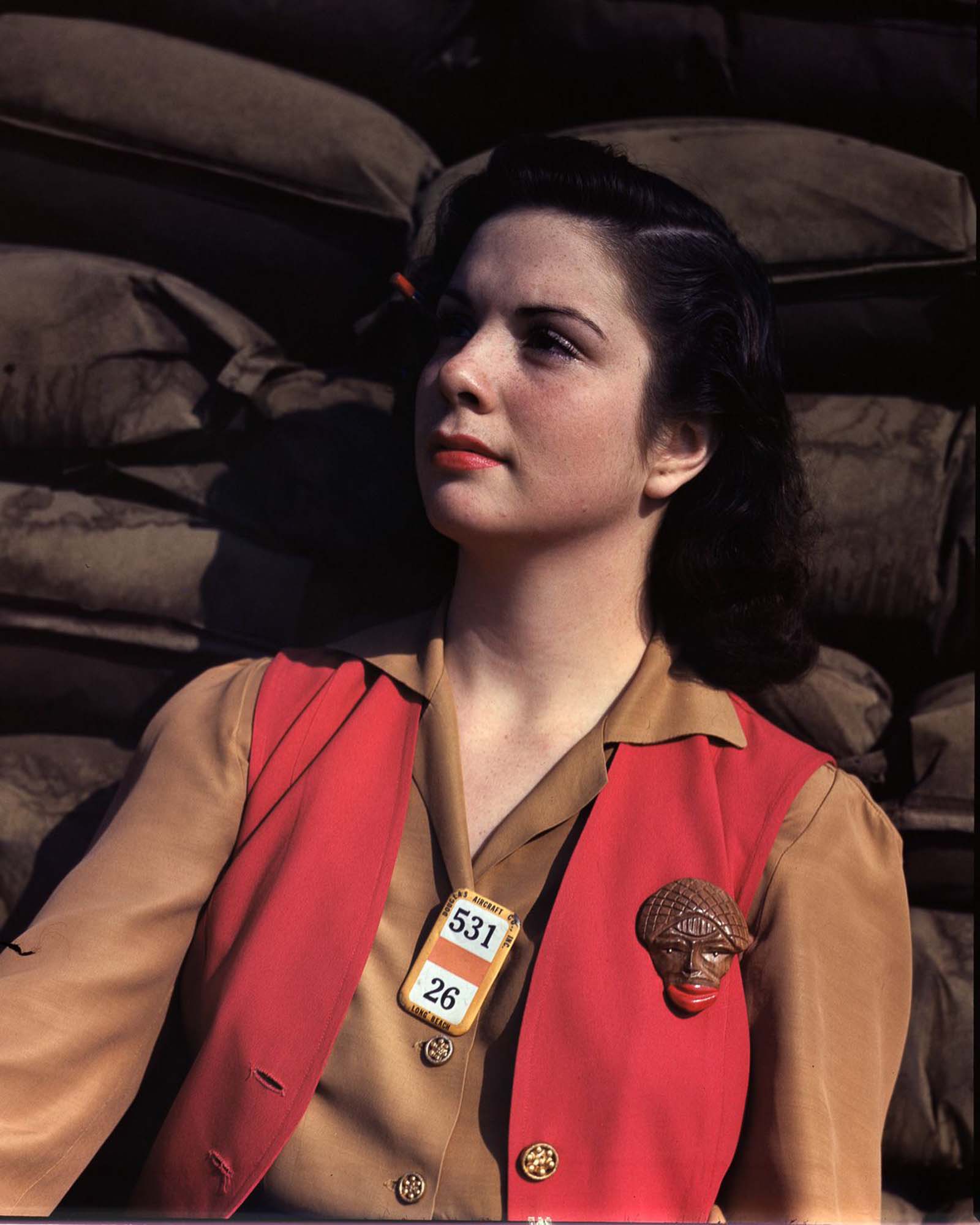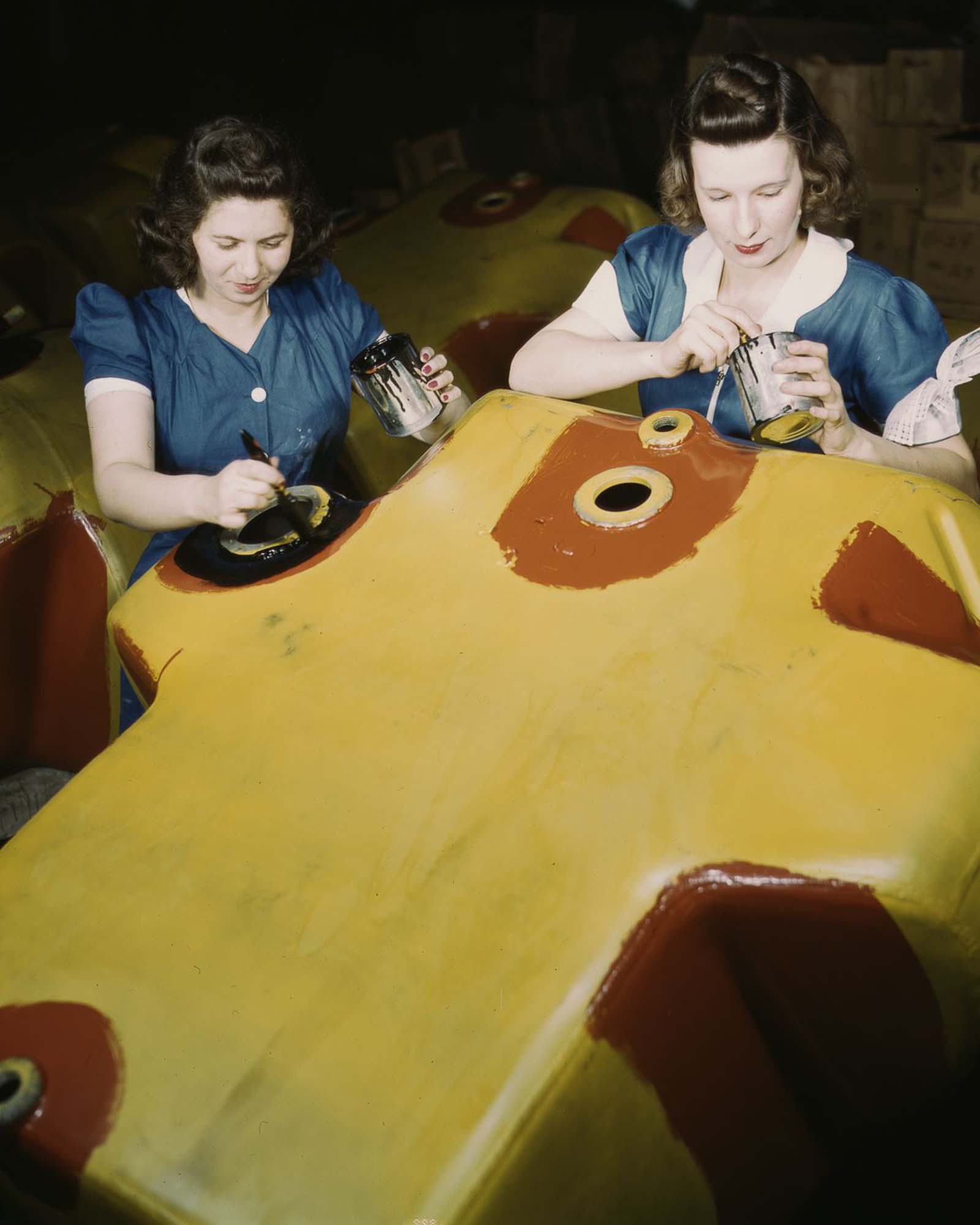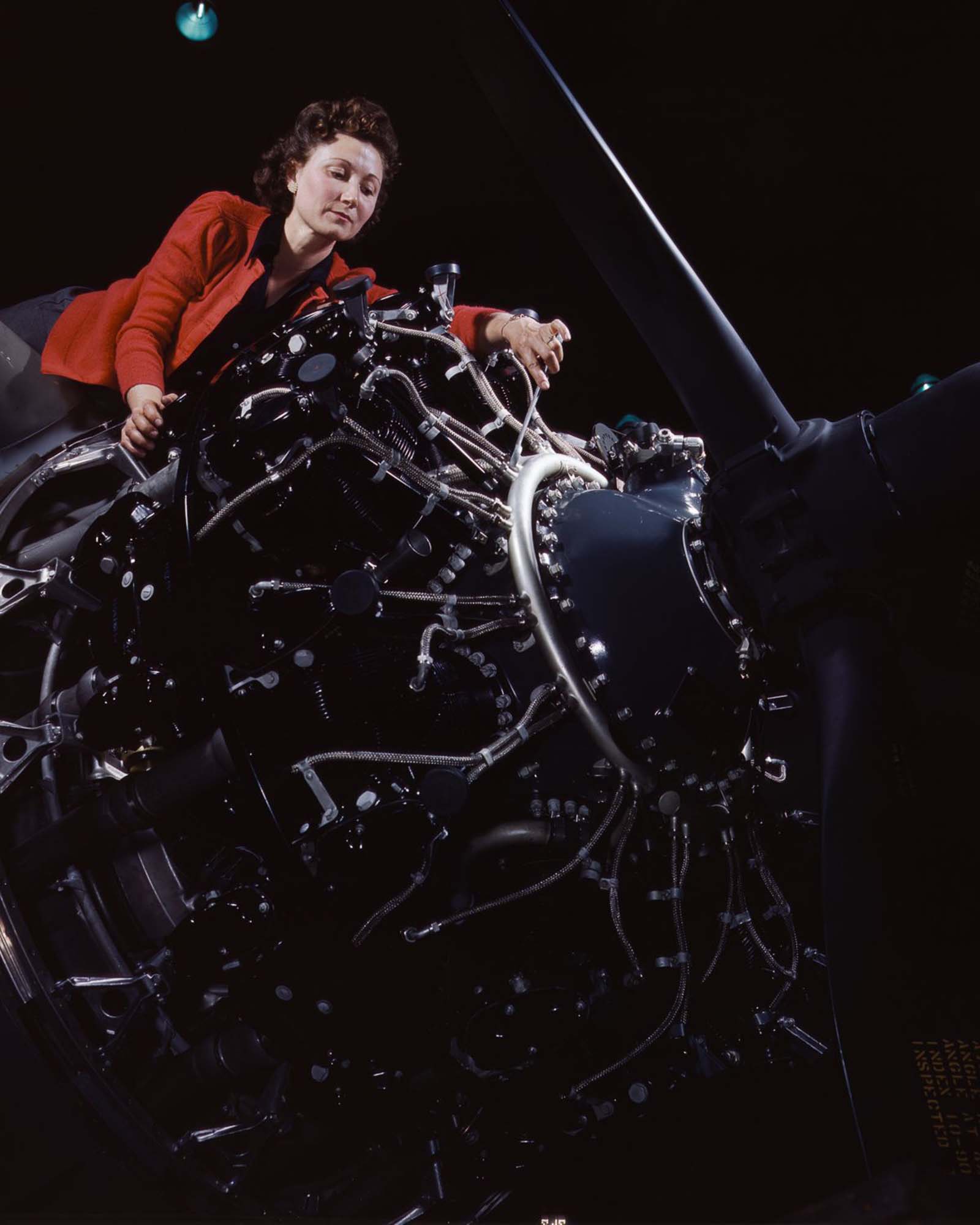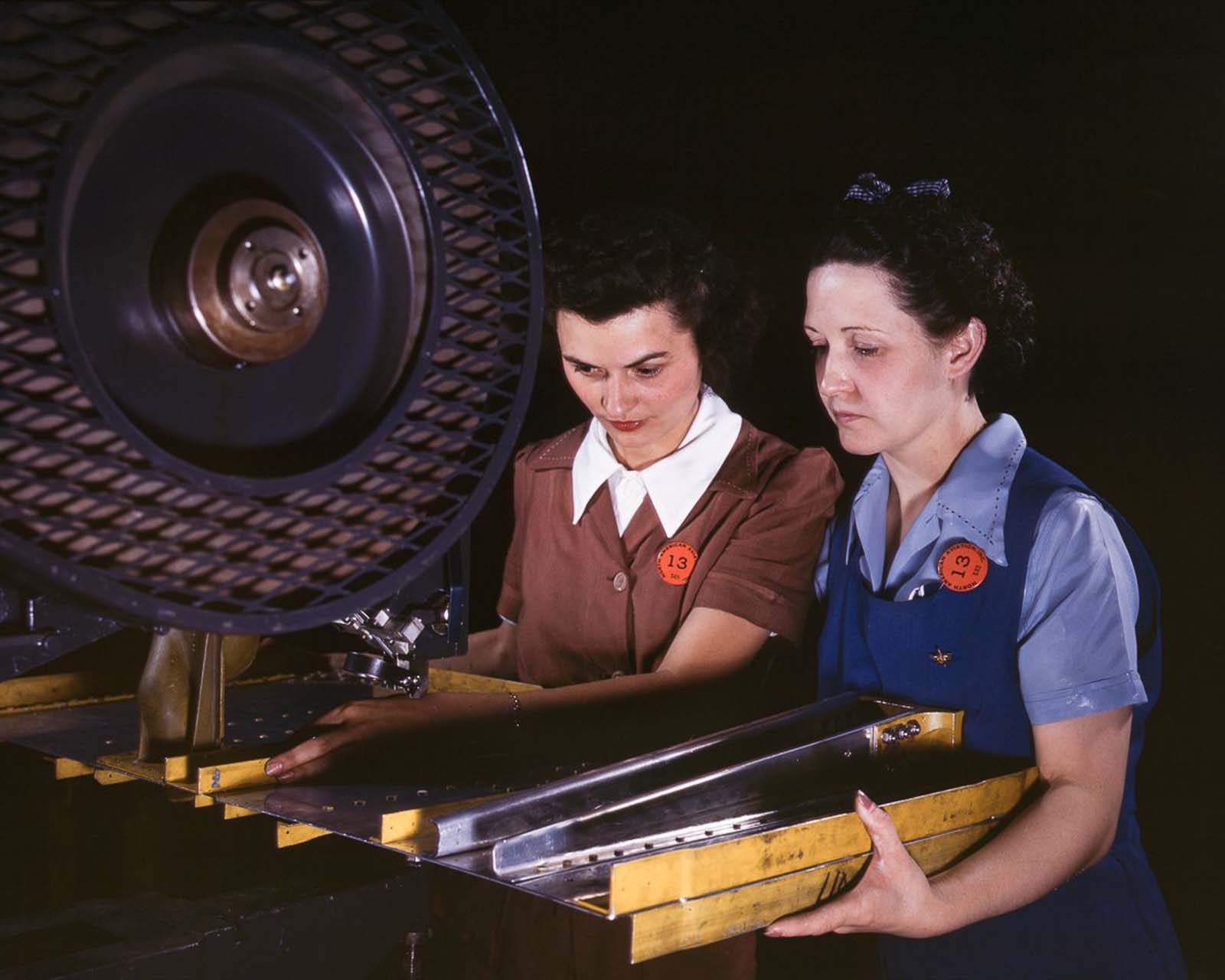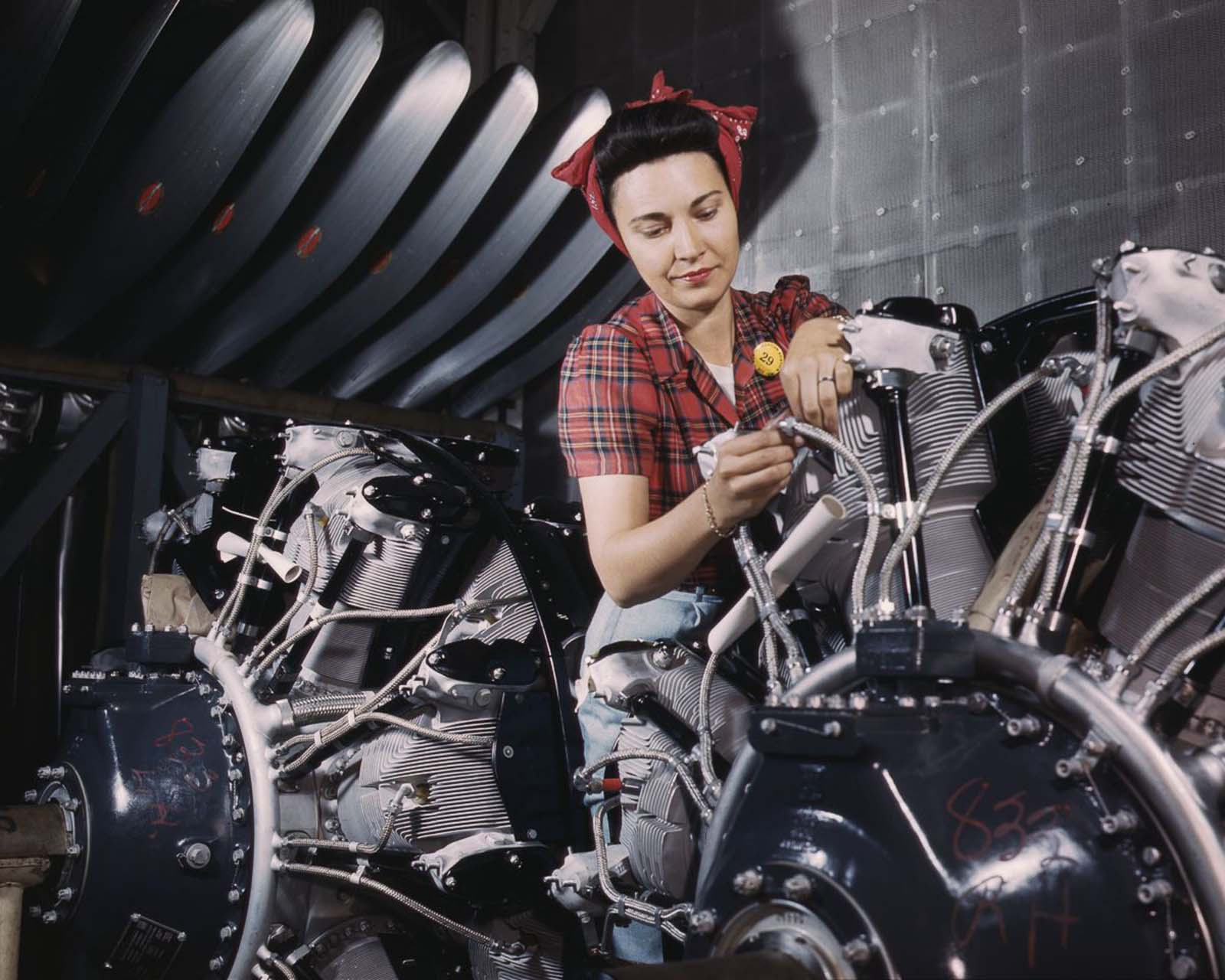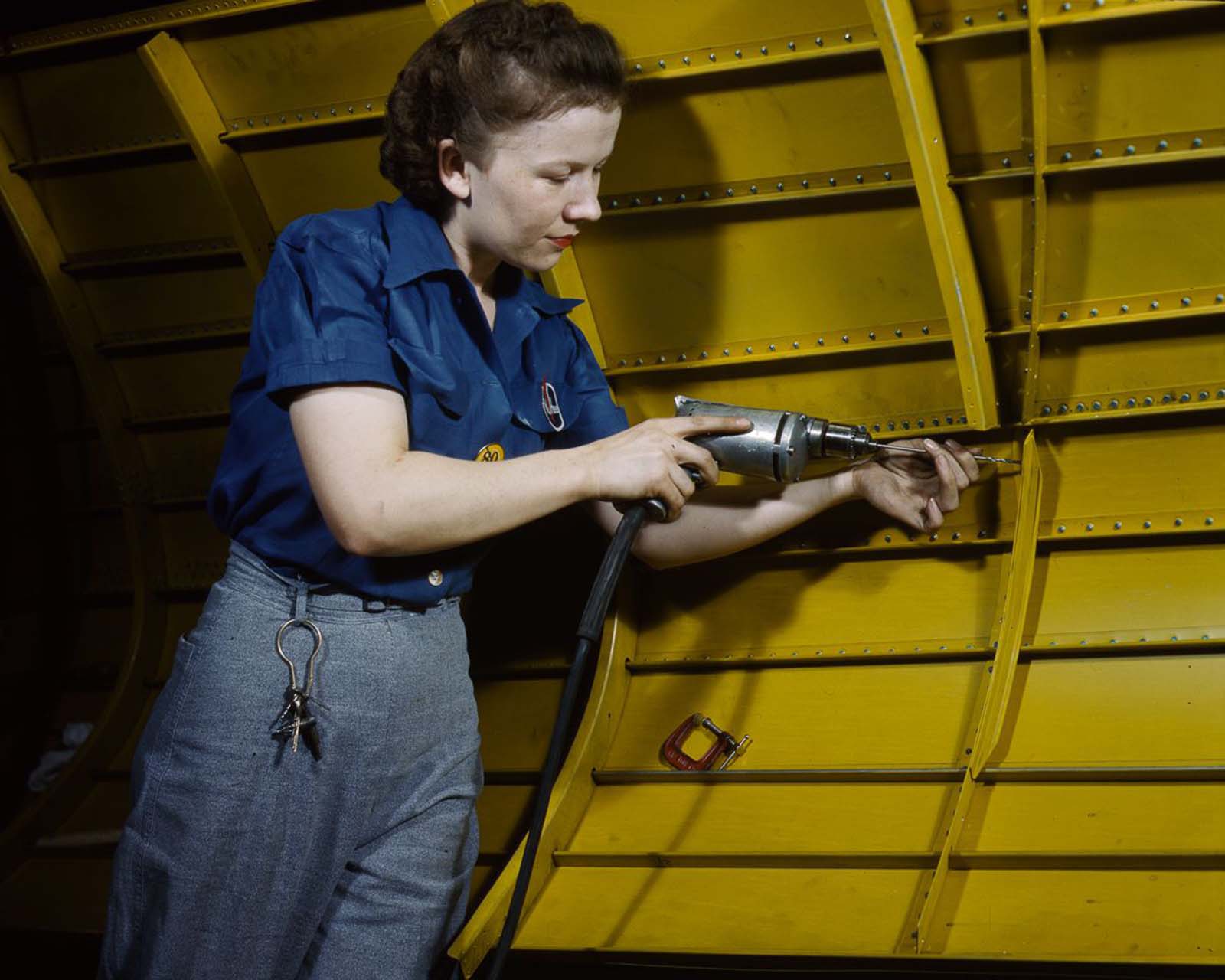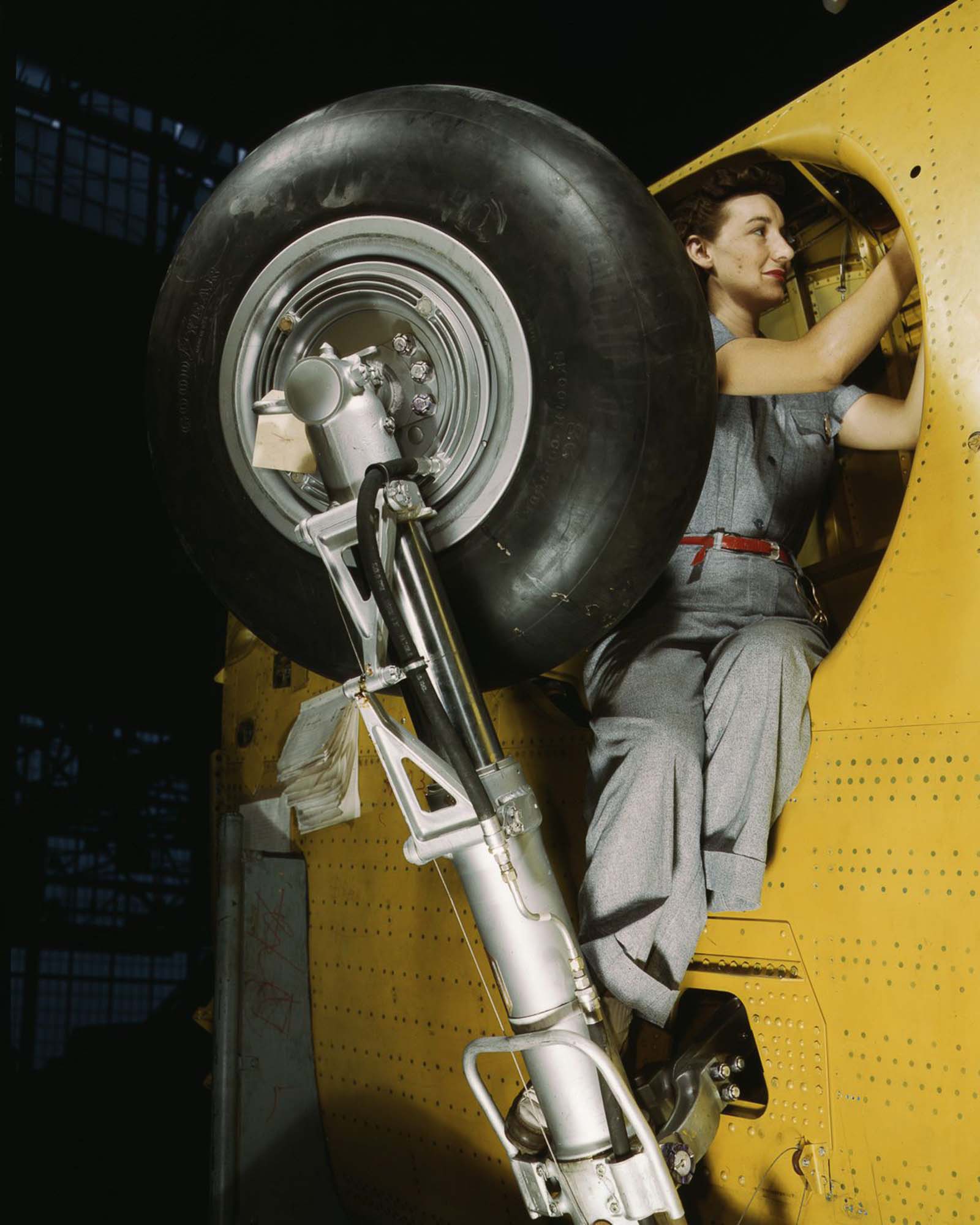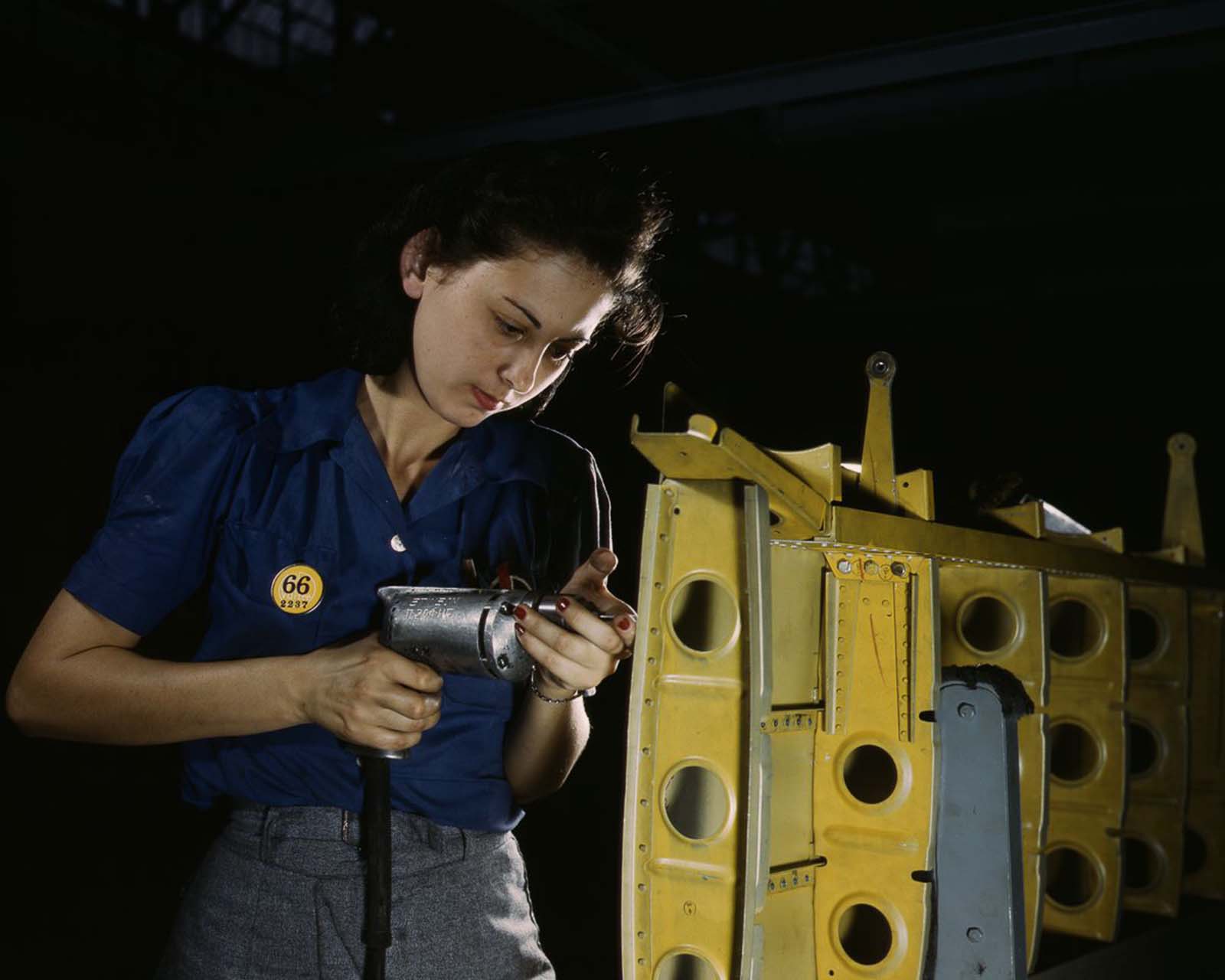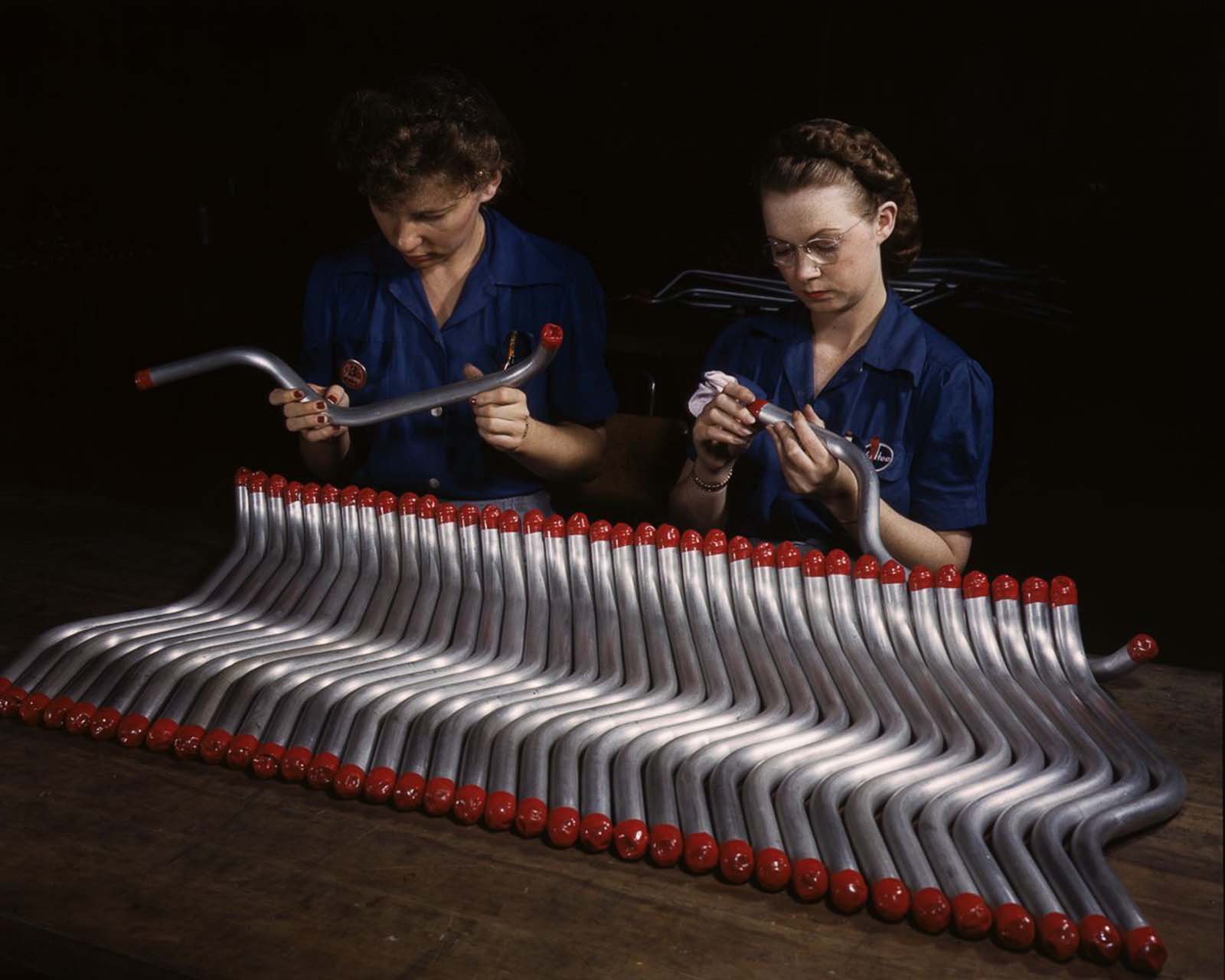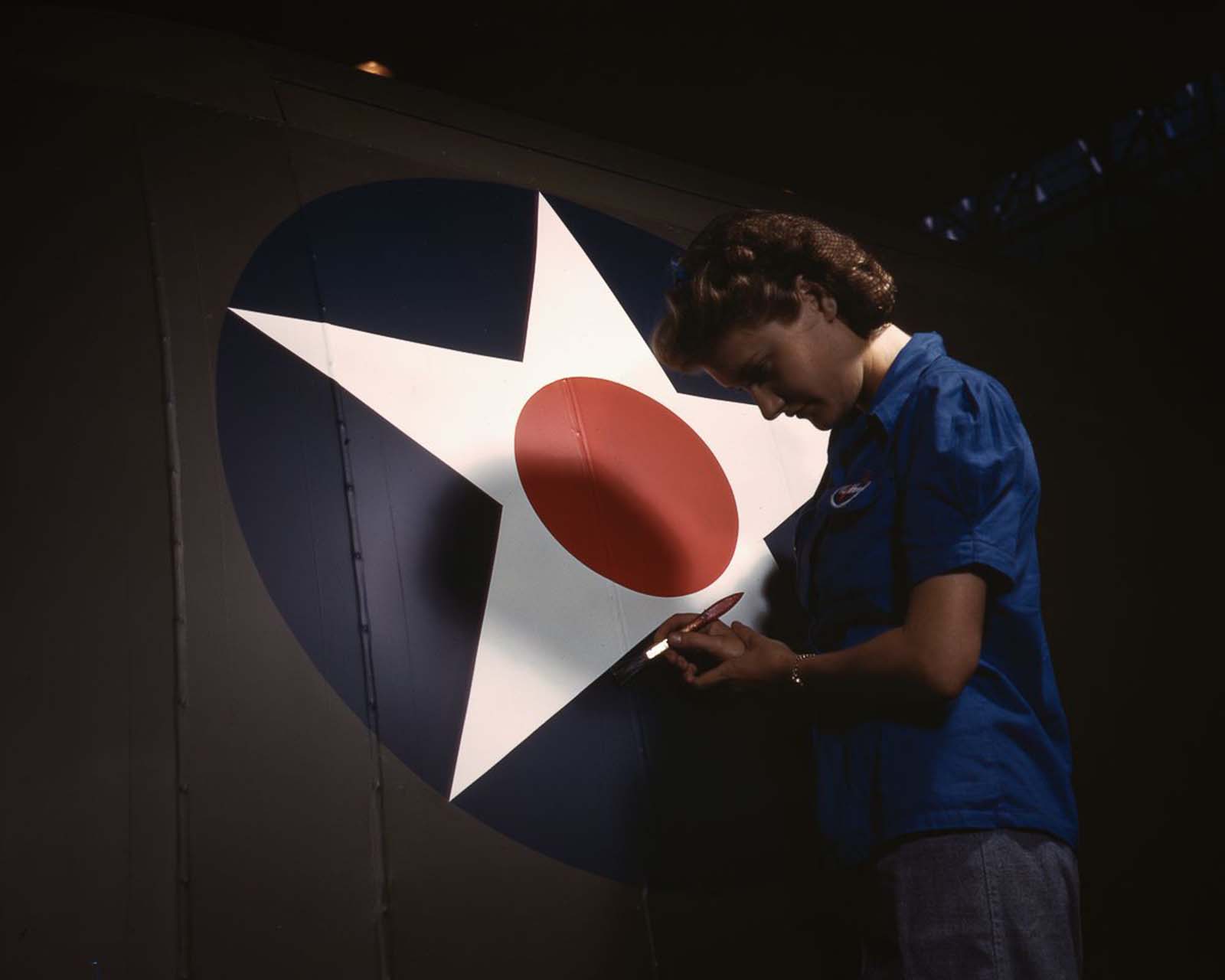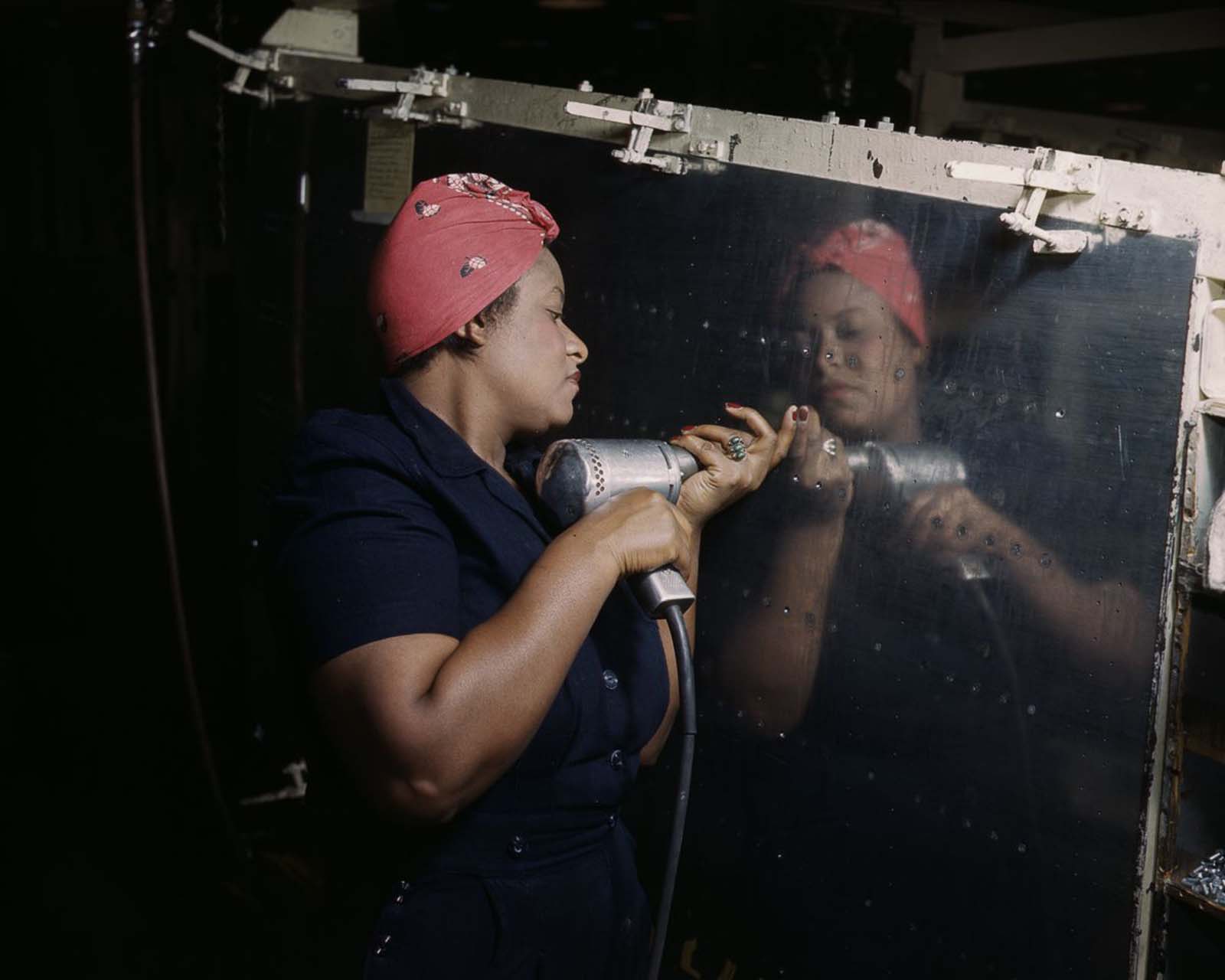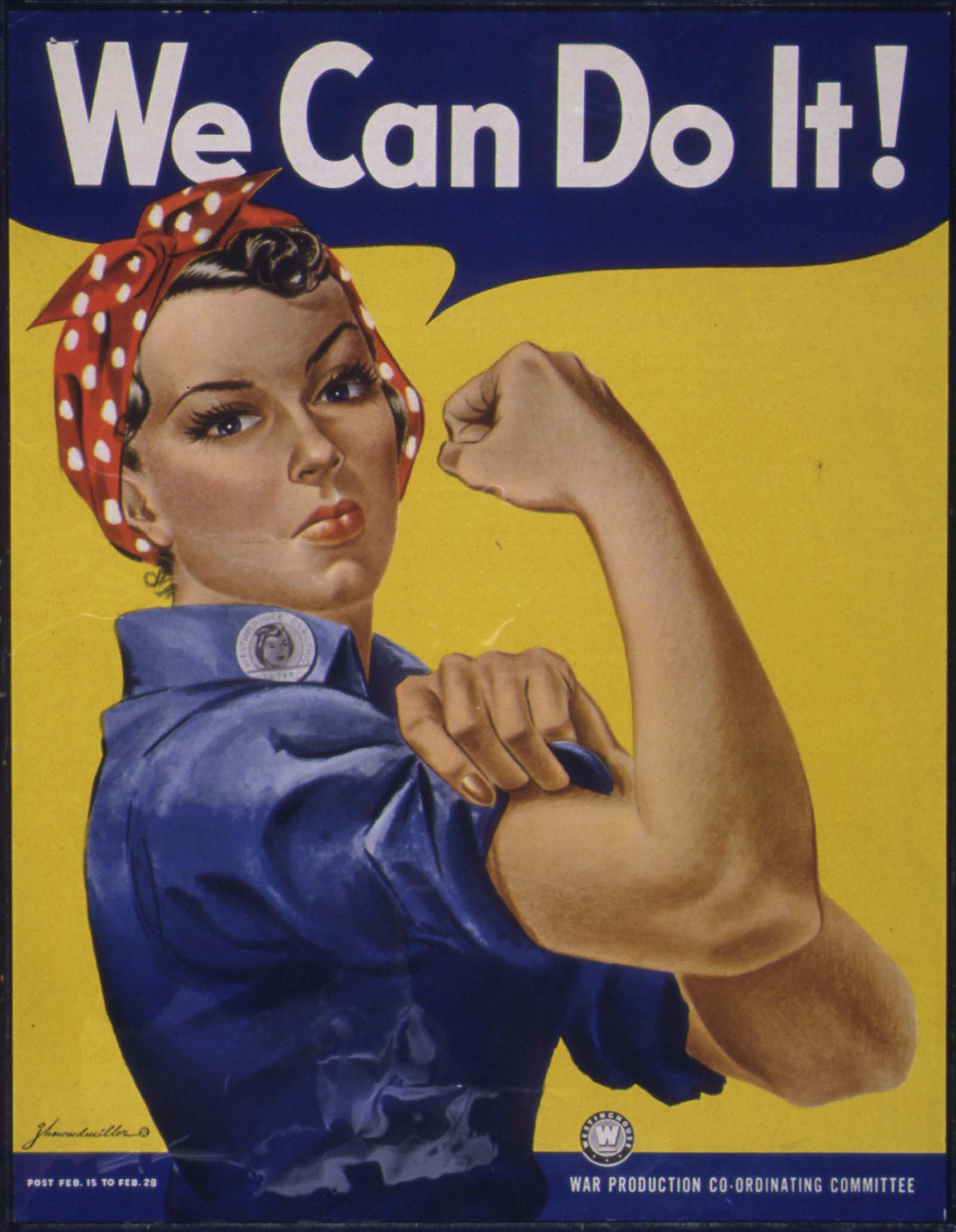During World War II, the number of women entering the workforce increased dramatically, as widespread male enlistment left a huge gap in industrial employment. The female percentage of the U.S. workforce increased from 27 percent to nearly 37 percent between 1940 and 1945, and by 1945, nearly a quarter of married women worked outside the home. The U.S. aircraft industry employed more than 310,000 women in 1943, making up 65 percent of the industry’s total workforce (compared with just 1 percent in pre-war years).
Newly created training courses taught the basics of riveting to women who had never worked outside the home and single girls fresh out of high school. The railing was often the first job women were offered. Women were likely successful at riveting because it was similar to sewing (assembling and sewing a garment together). Women learned and mastered many jobs as the aviation industry developed, including riveting. Some women chose more traditional female jobs, such as sewing aircraft upholstery or painting radium into tiny measurements on instrument panels so that pilots could see them in the dark. Perhaps more adventurous, several others chose to run hydraulic presses that cut metal parts, while others used cranes to move bulky plane parts from one end of the factory. Even women inspectors were involved to ensure any necessary adjustments were made before the planes were flown out to war, often by female pilots. They primarily built large bombers and small fighters. Women were also in the metal, steel, shipbuilding, and automobile industries. Additionally, women worked in the factories that made bombs, weapons, and aircraft.
Most women left factory jobs after the war as men returned to work. Although their role in supporting the war effort was not forgotten, nor was their contribution to women’s advancement. Below are some stunning color photos of women working in aircraft manufacturing plants by photographer Alfred T. Palmer.


